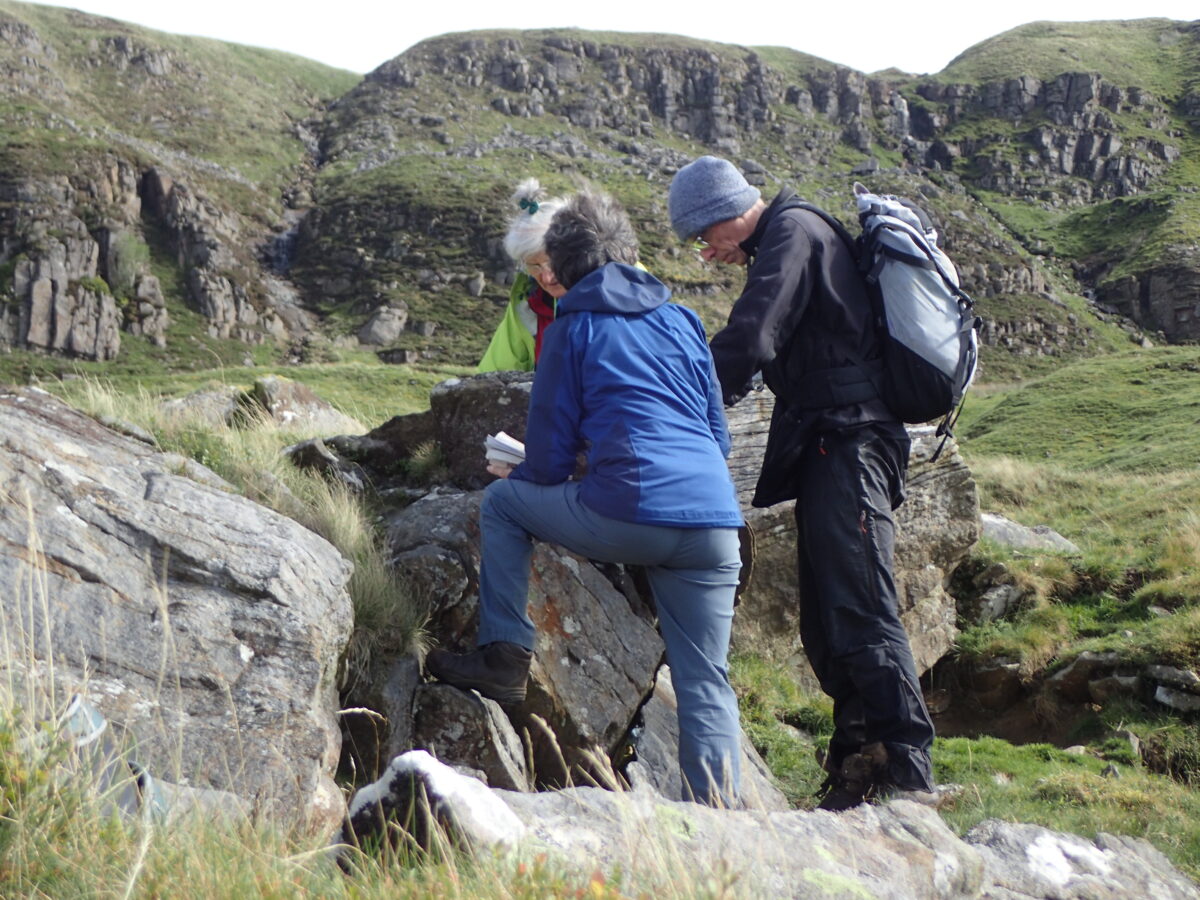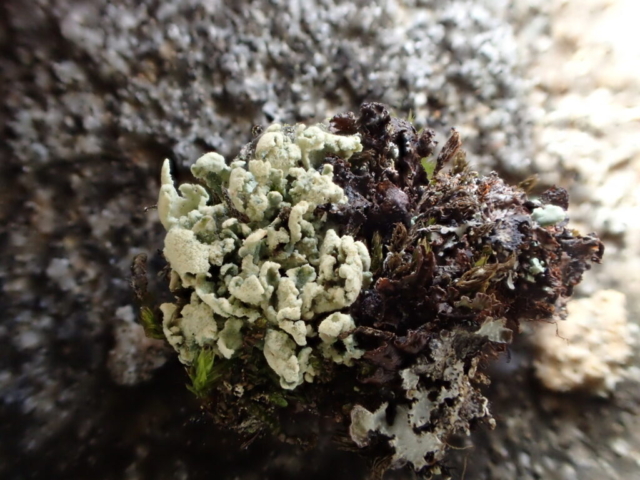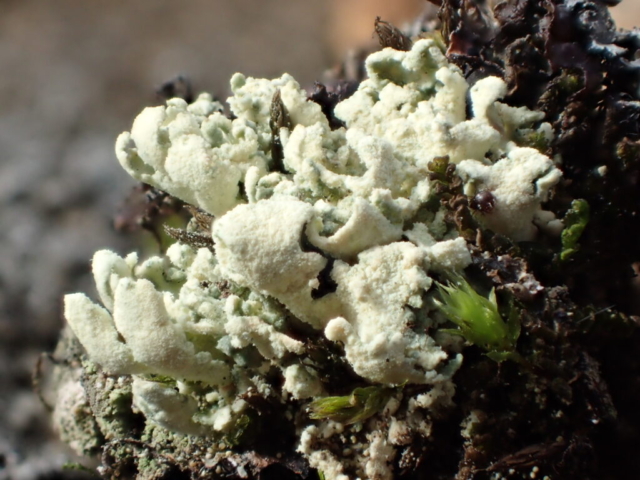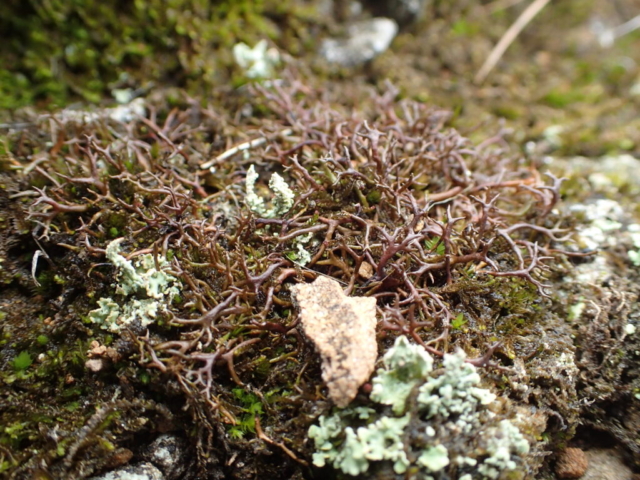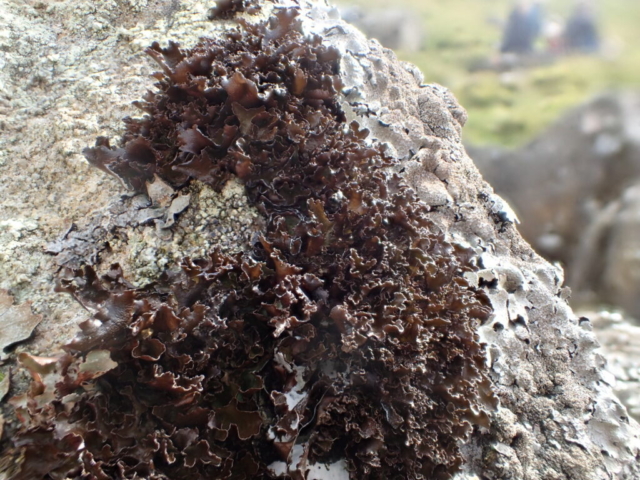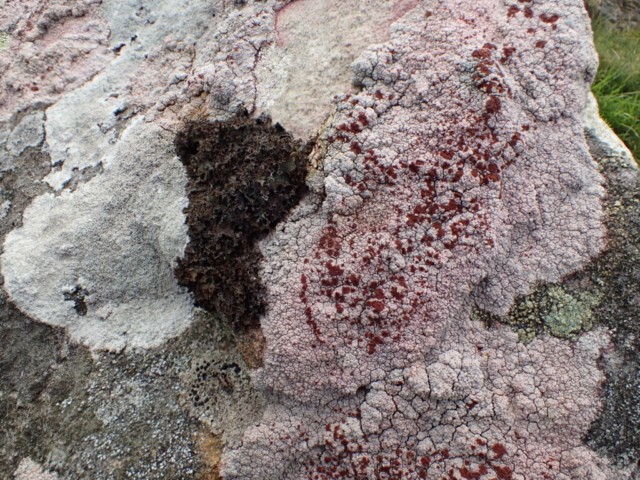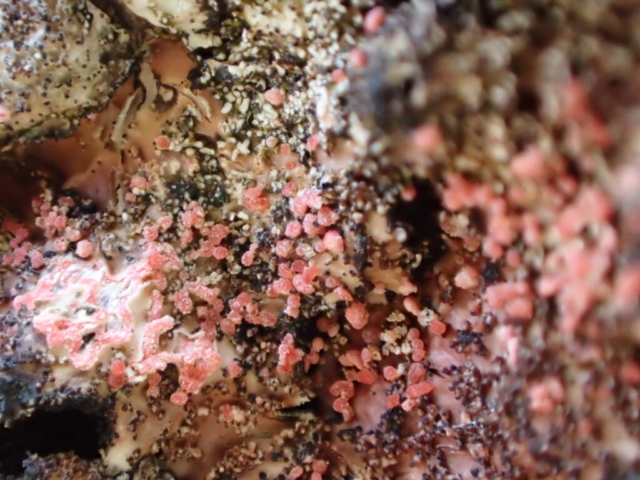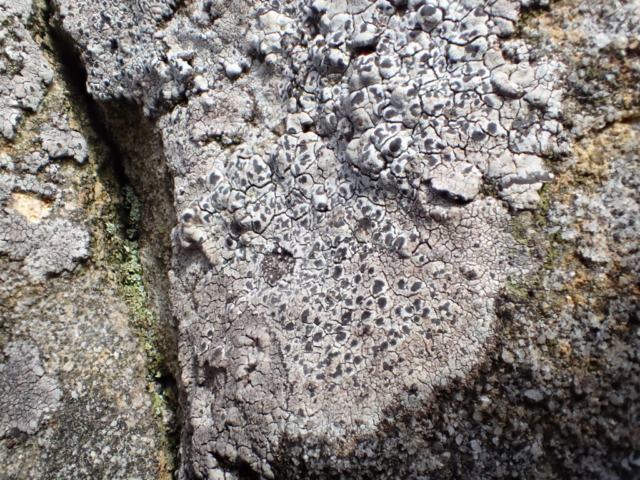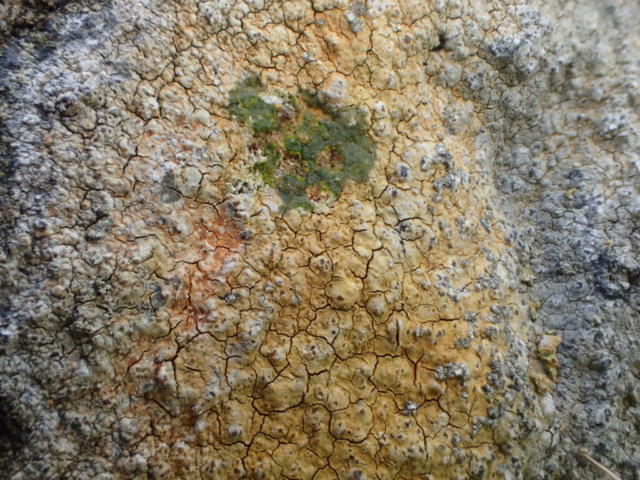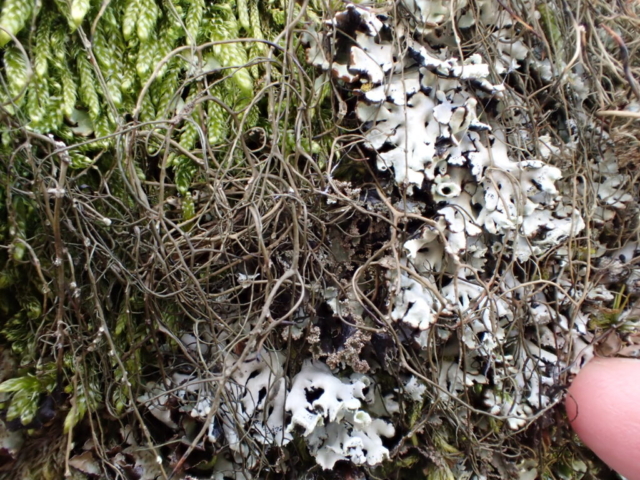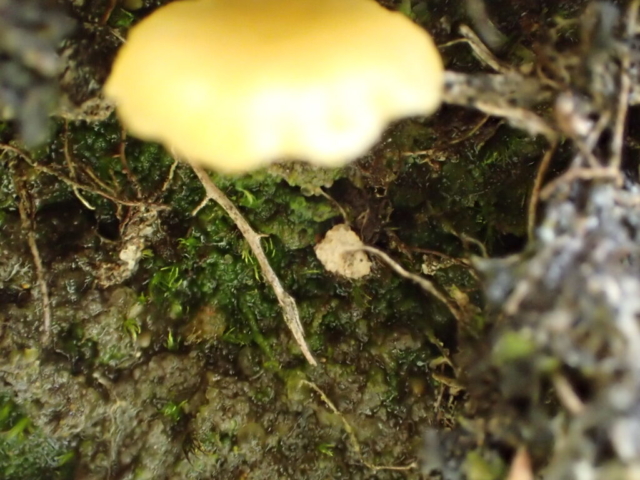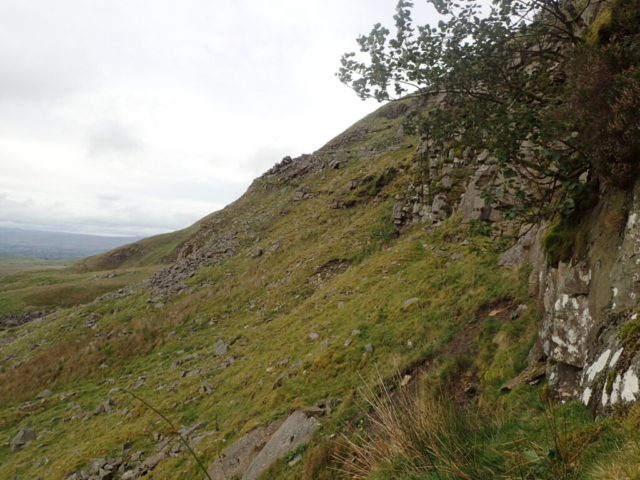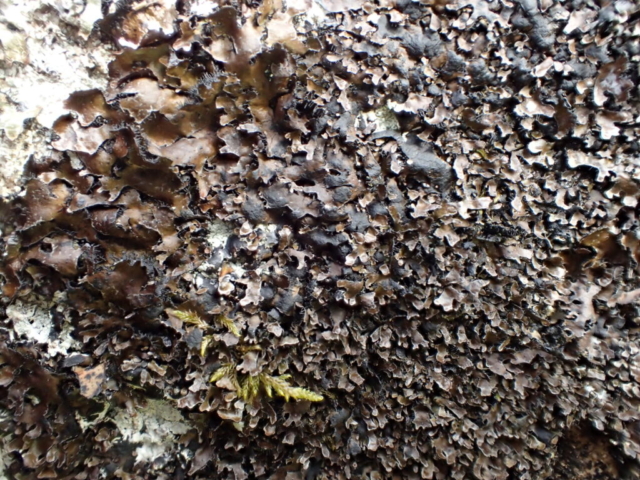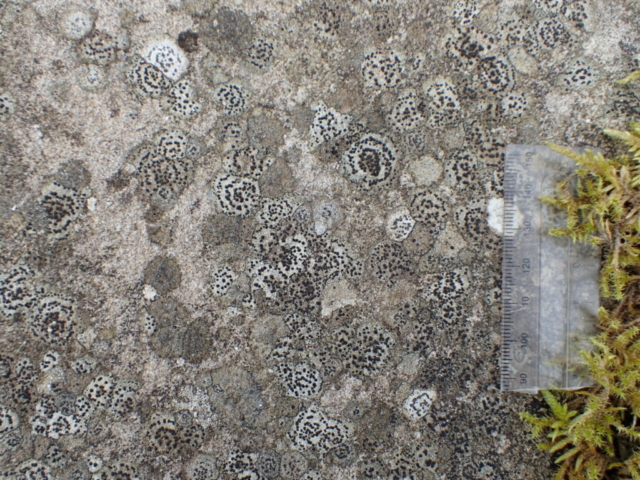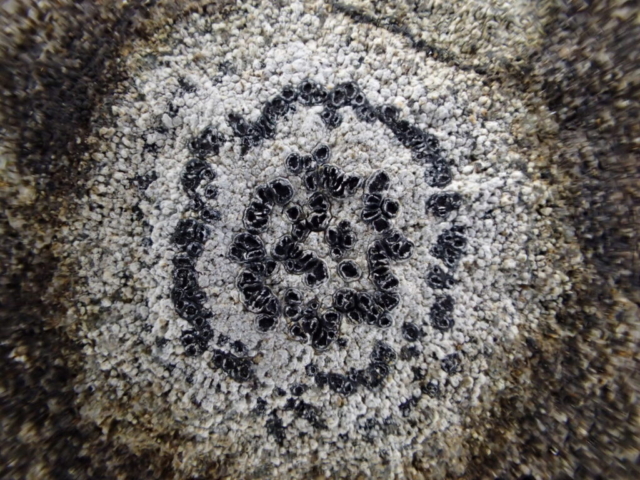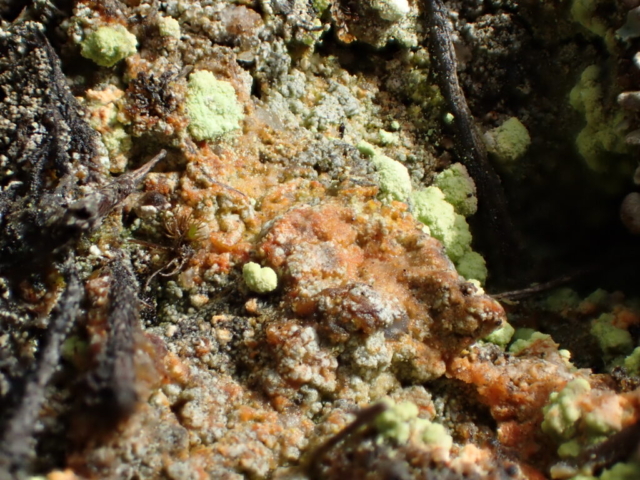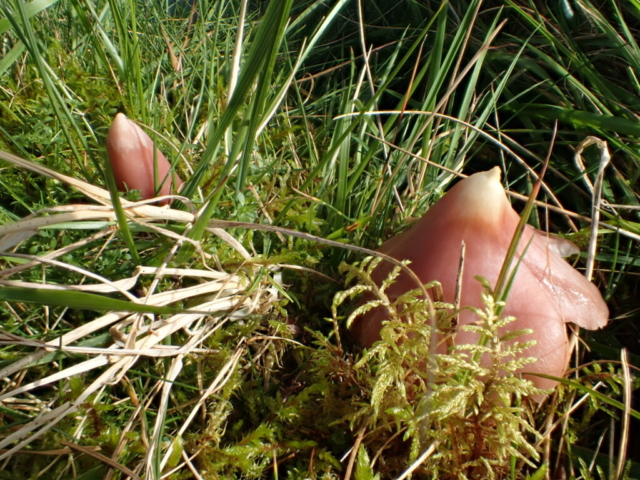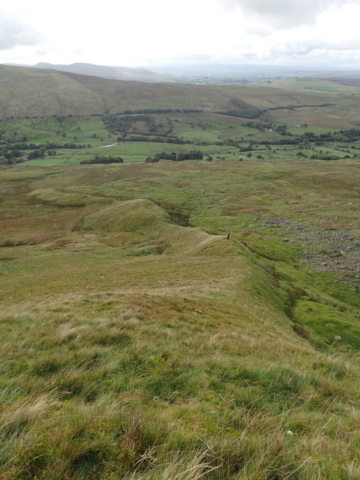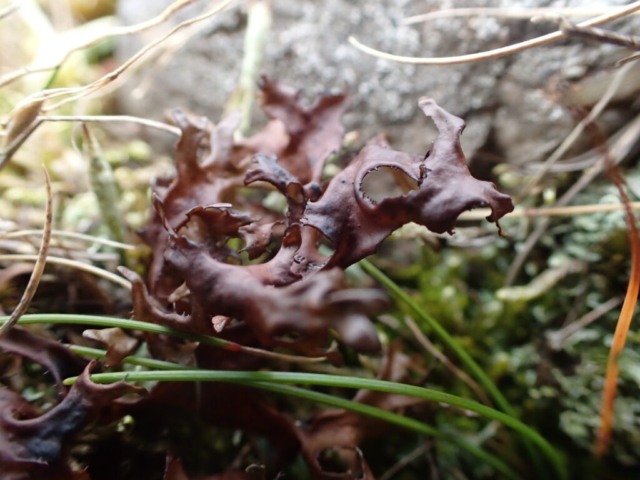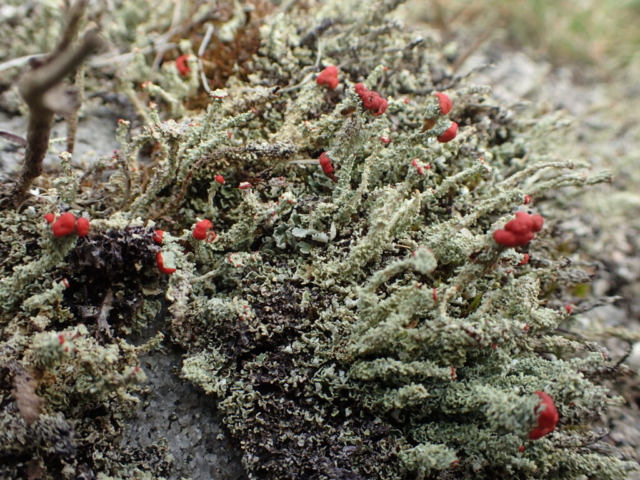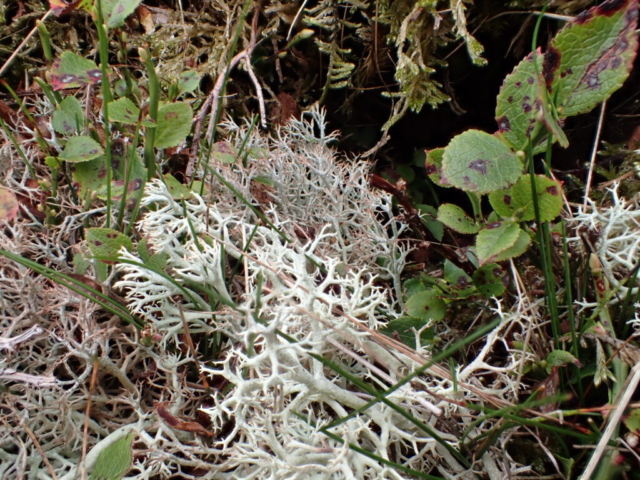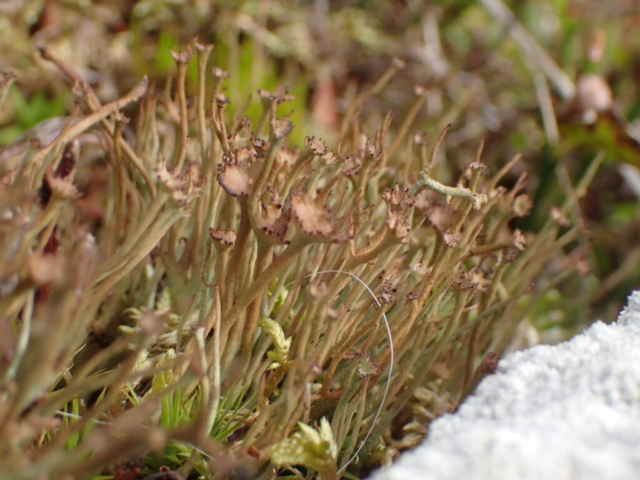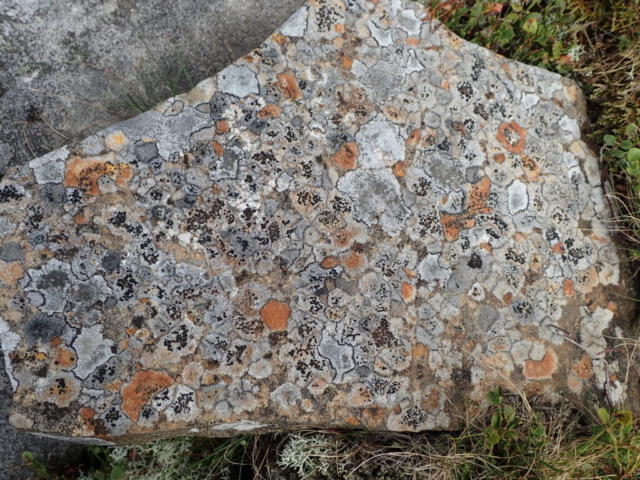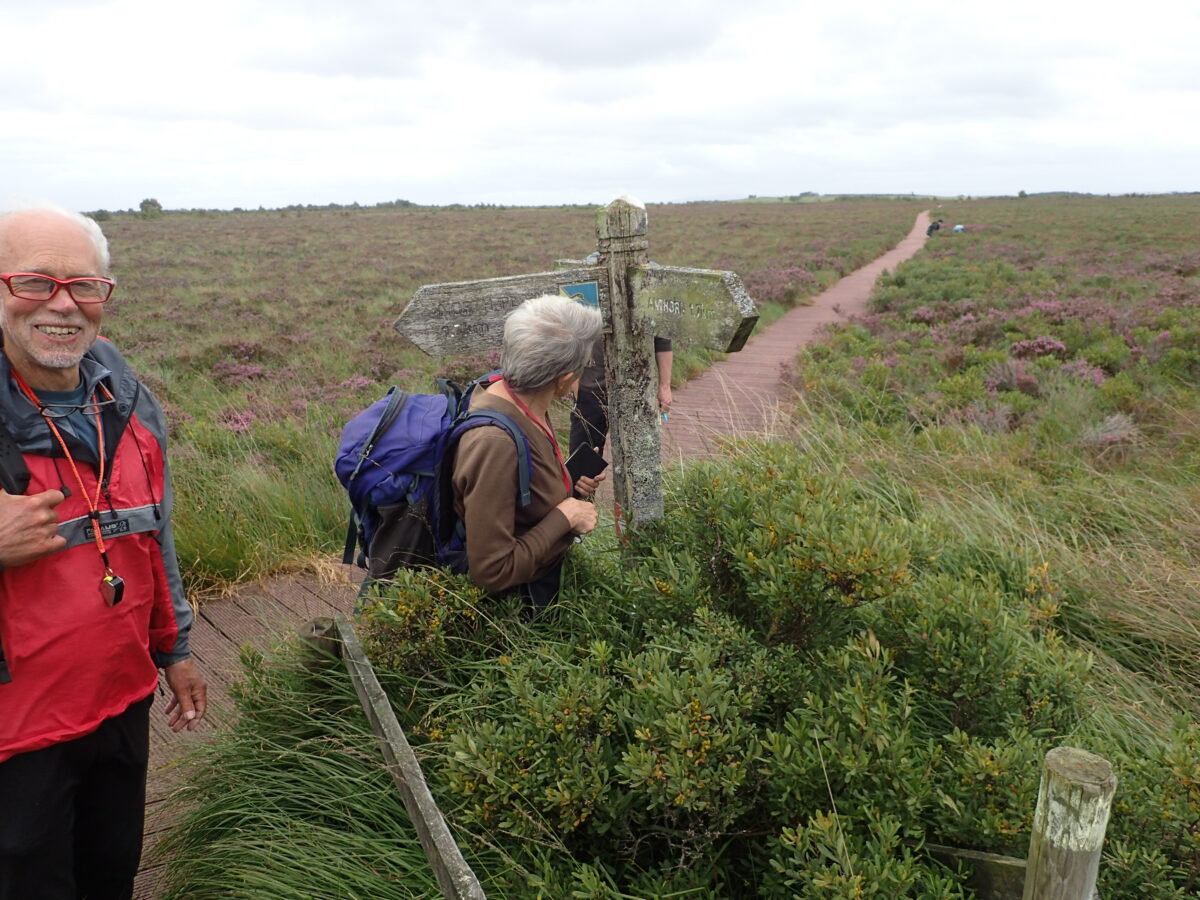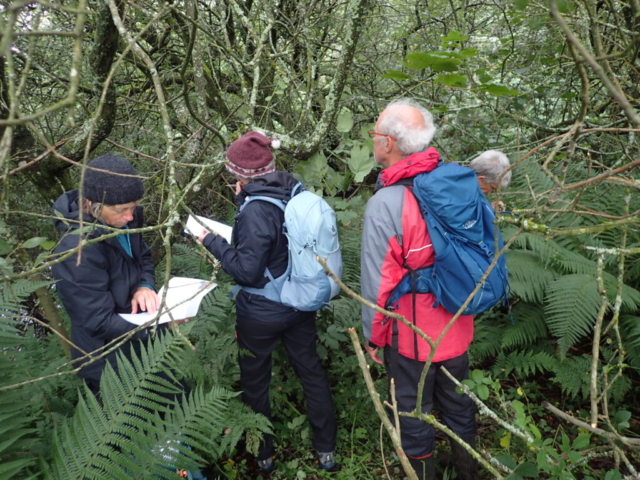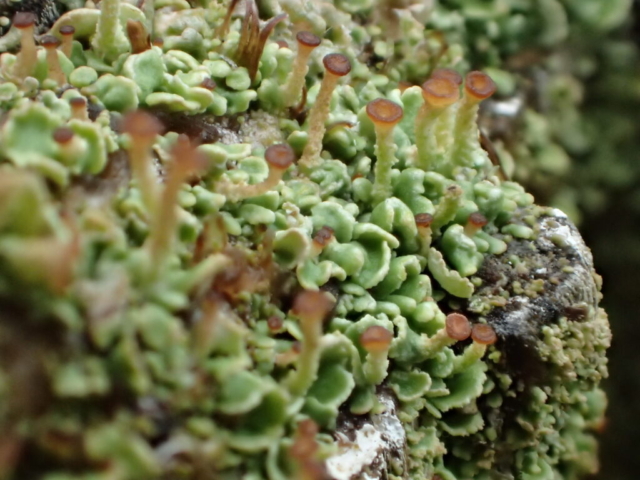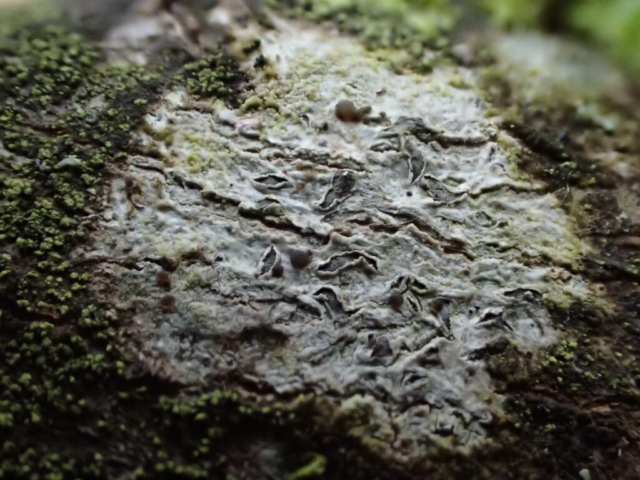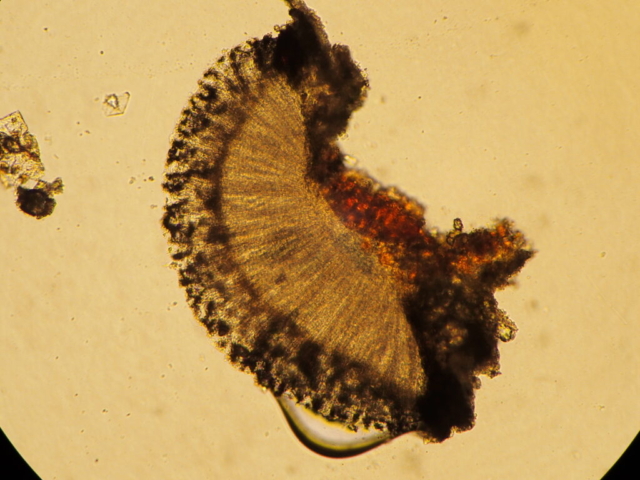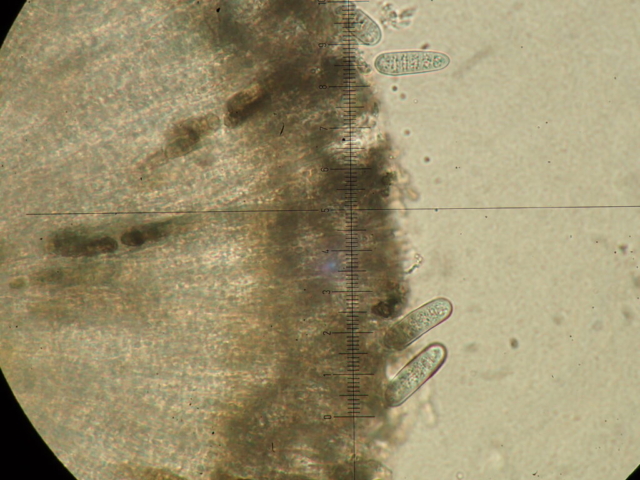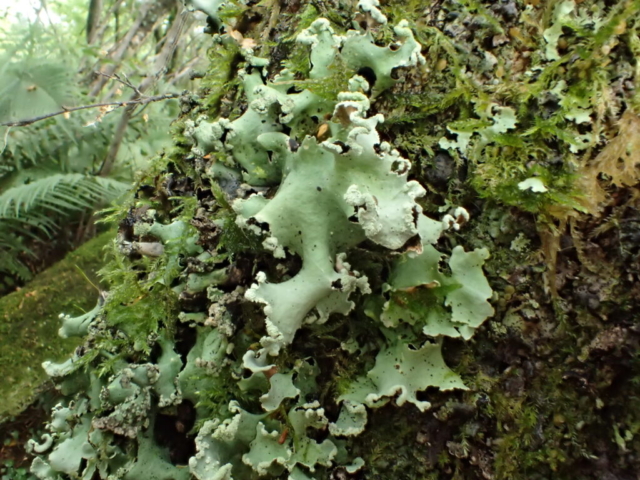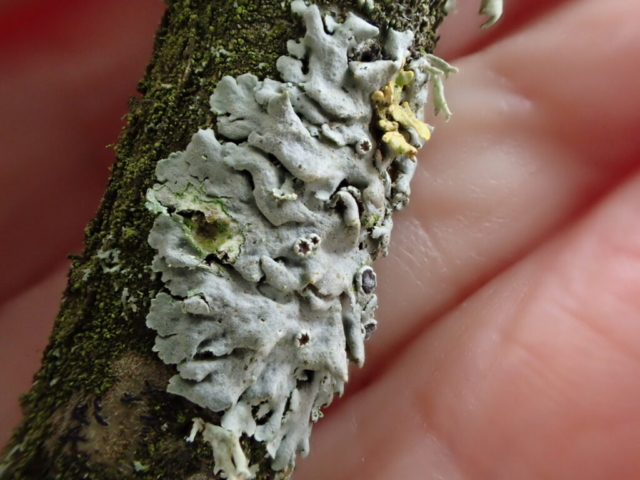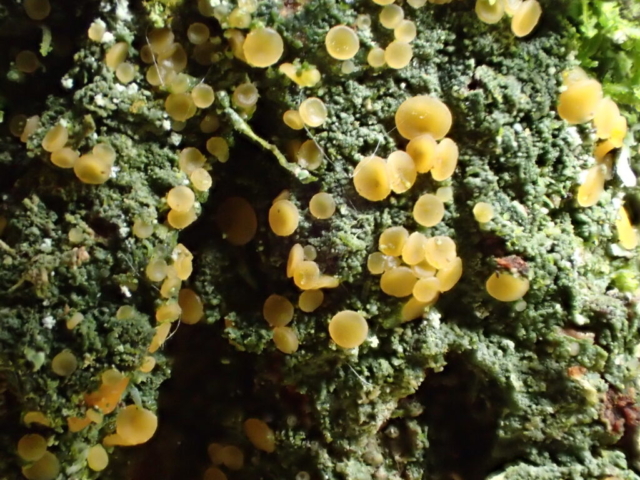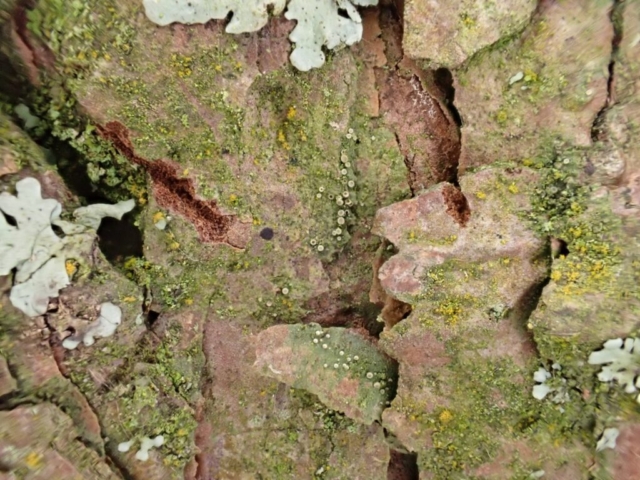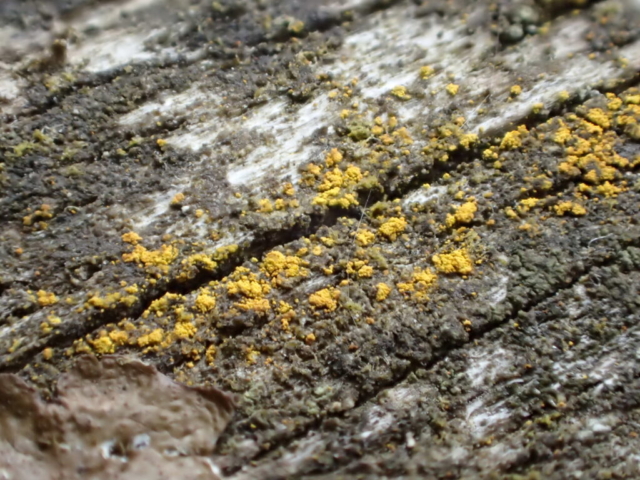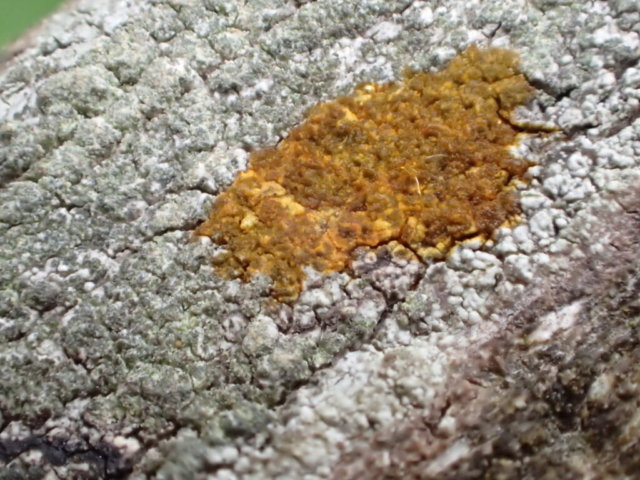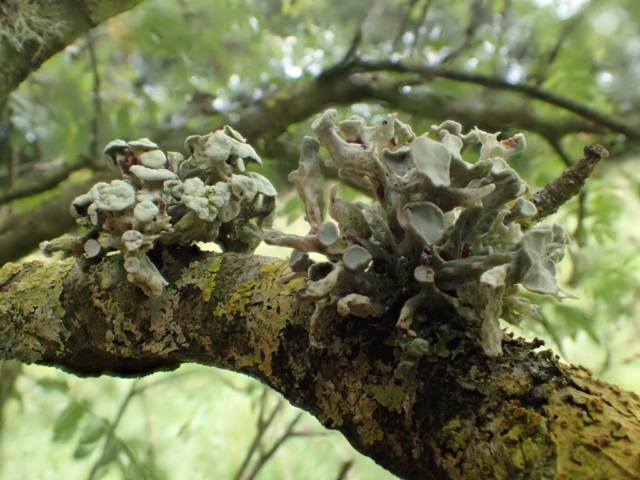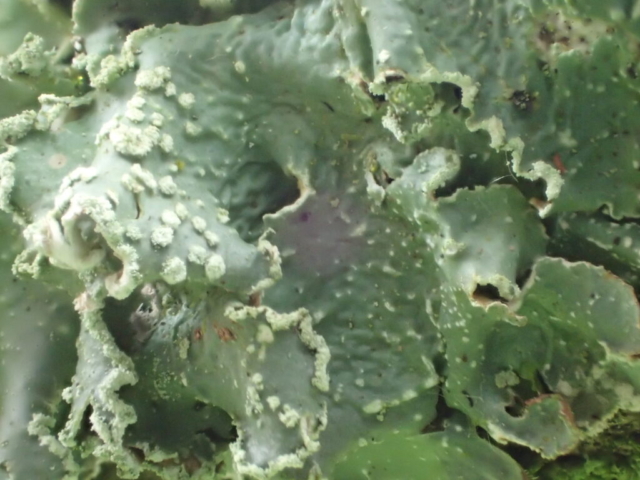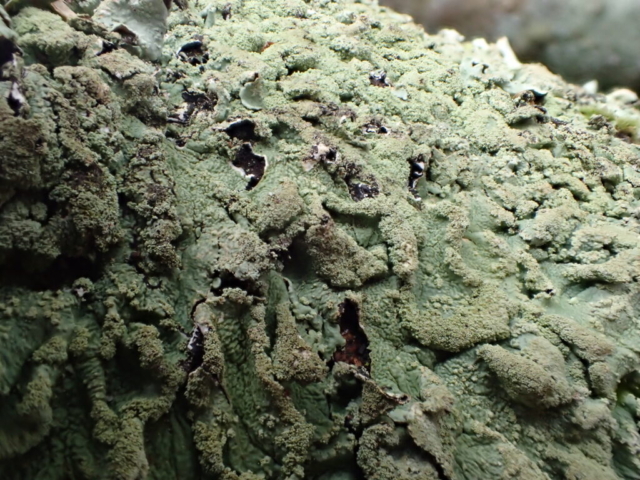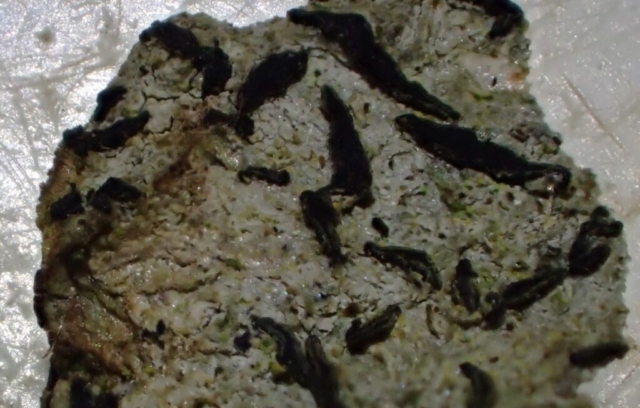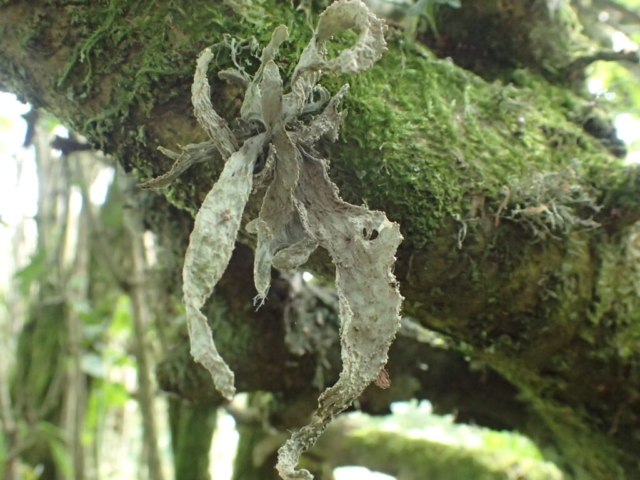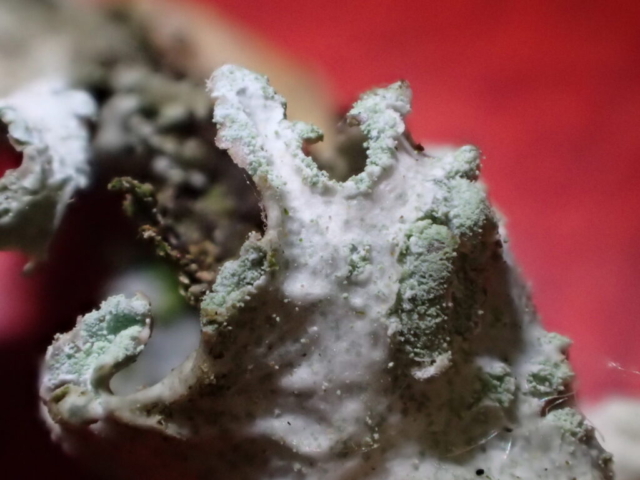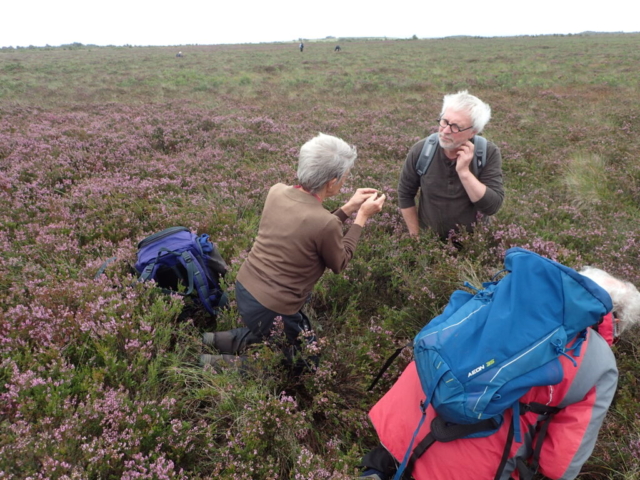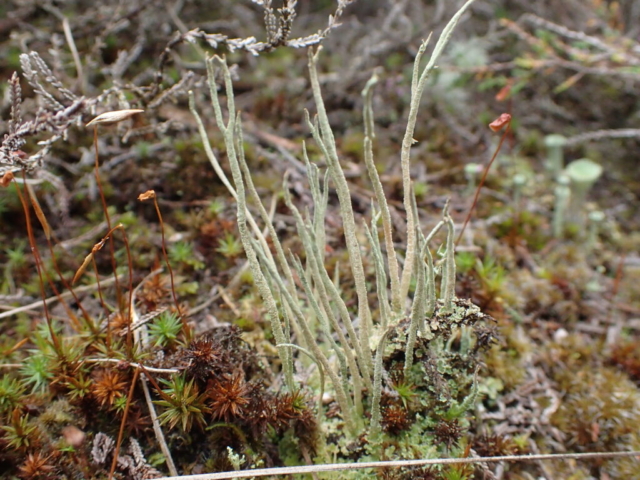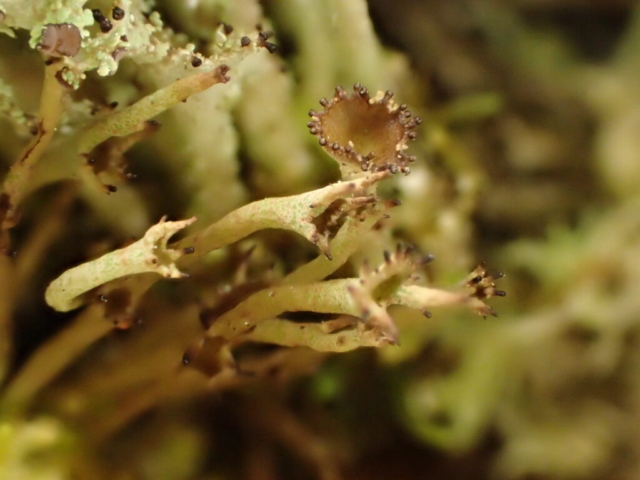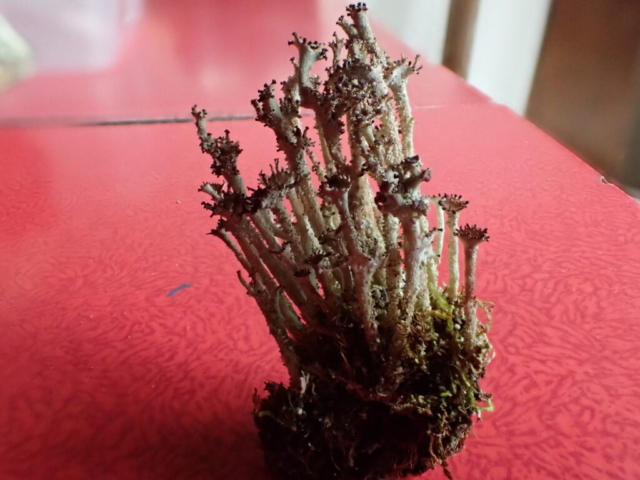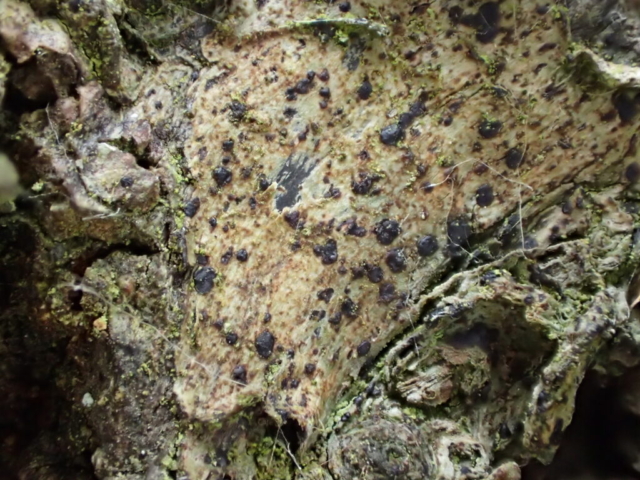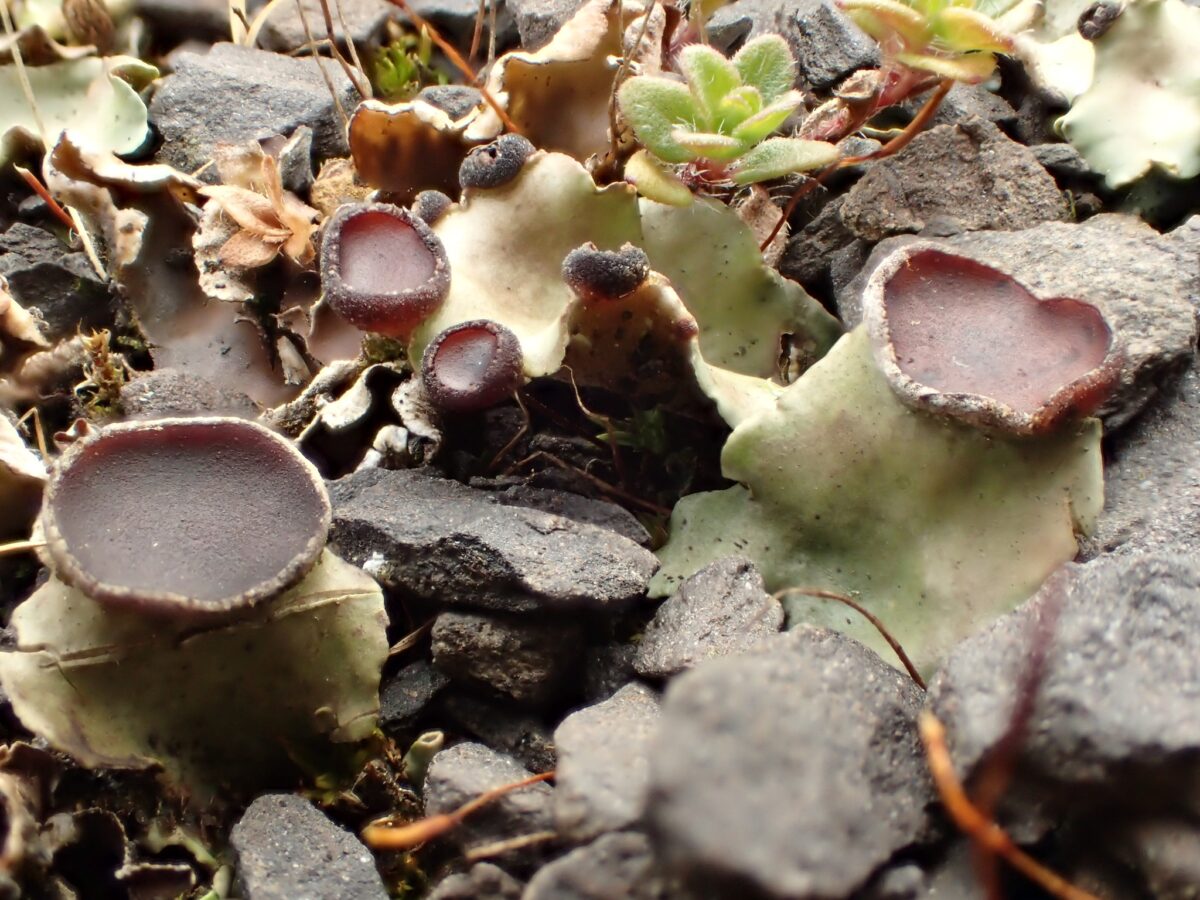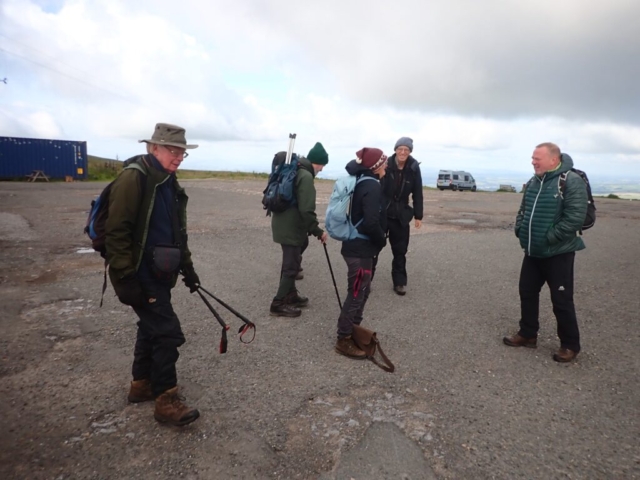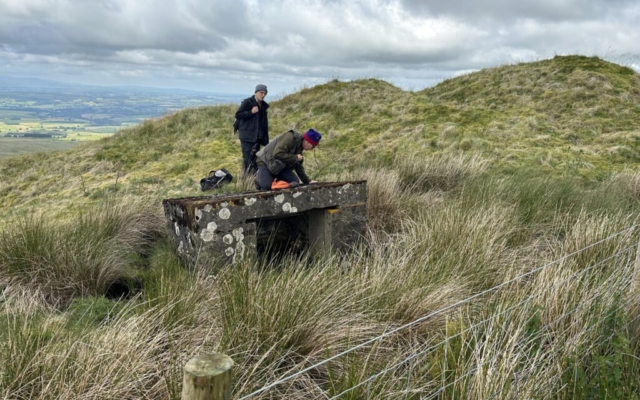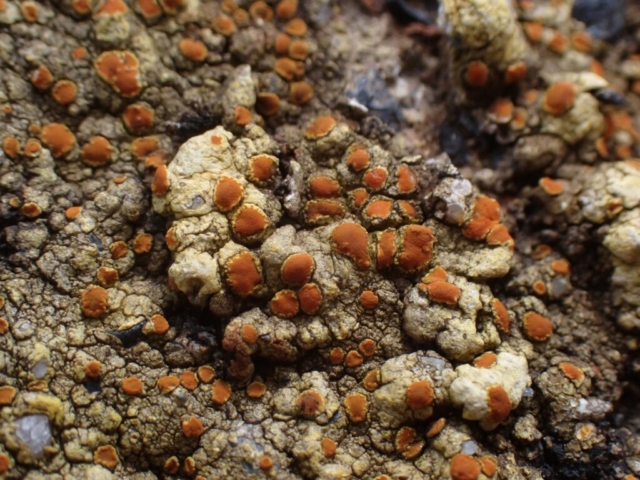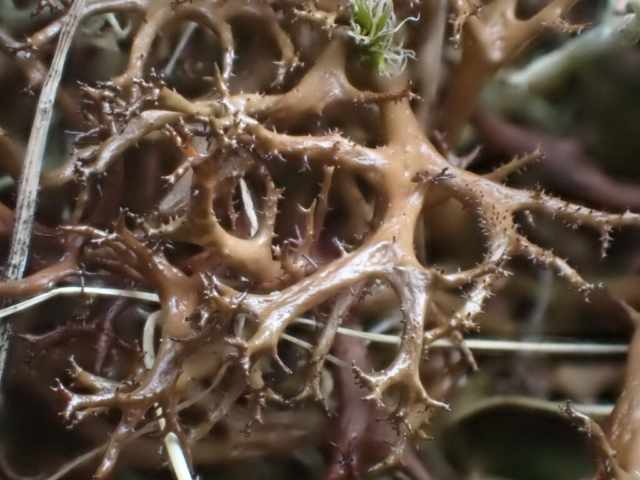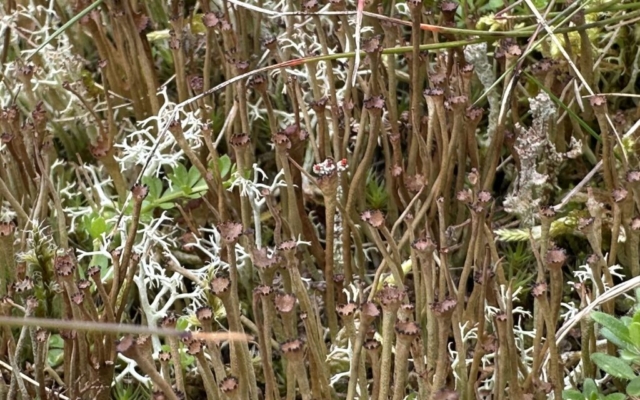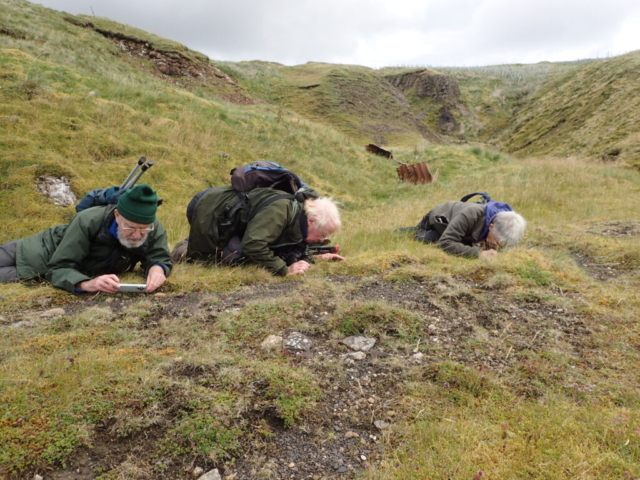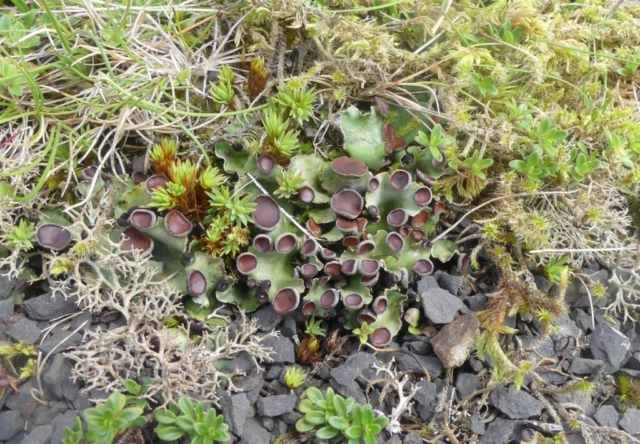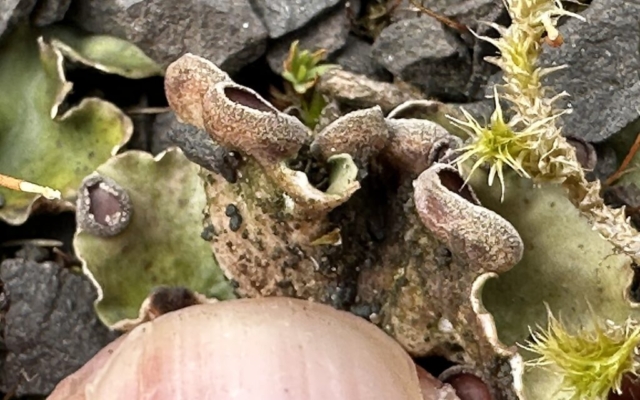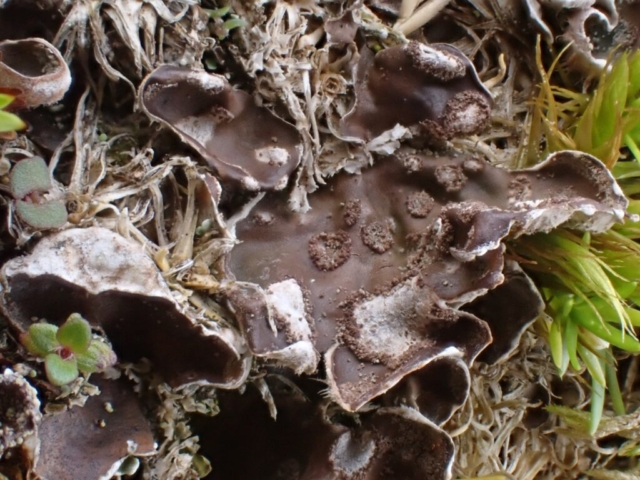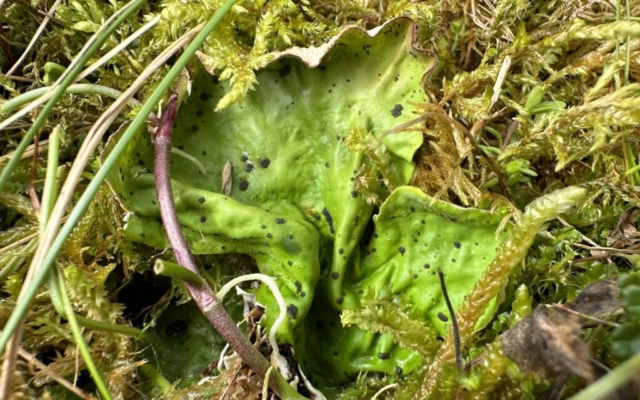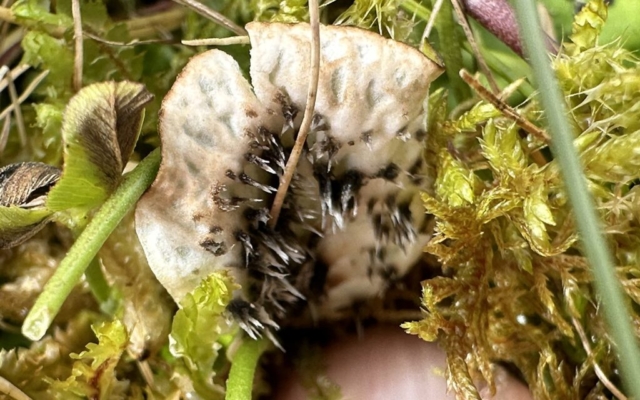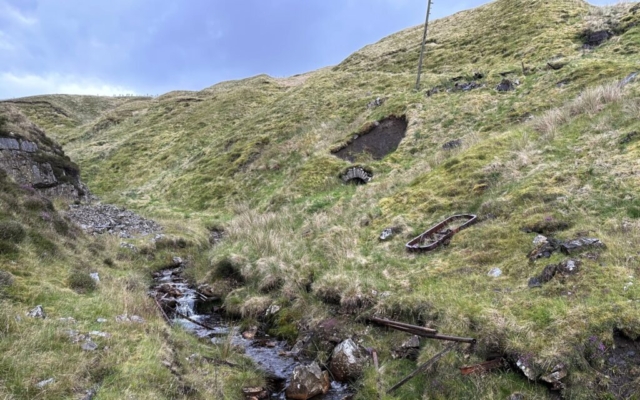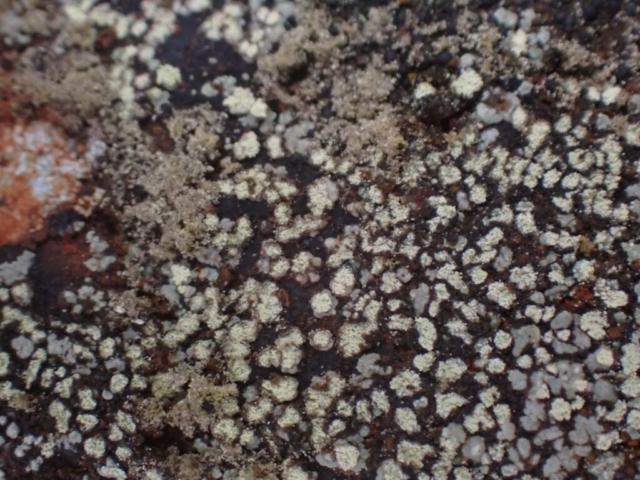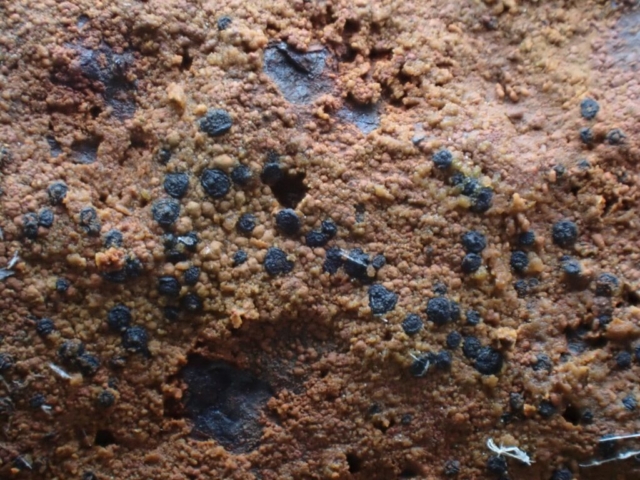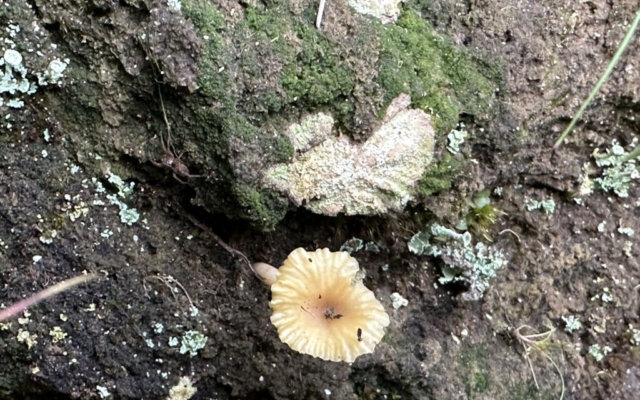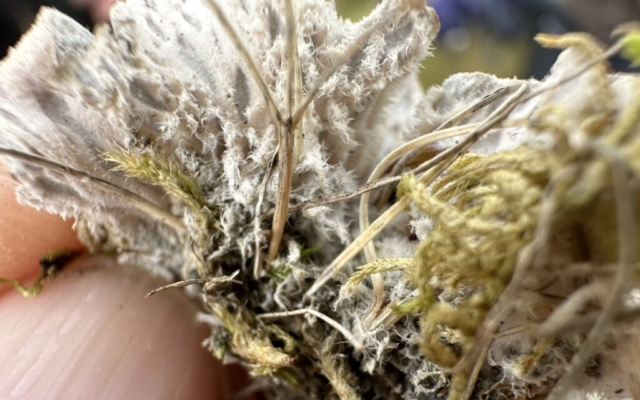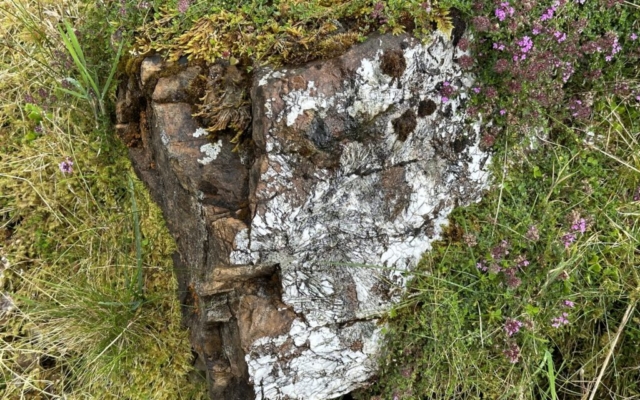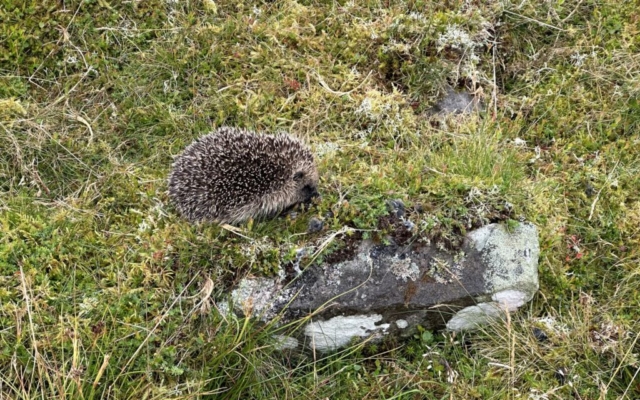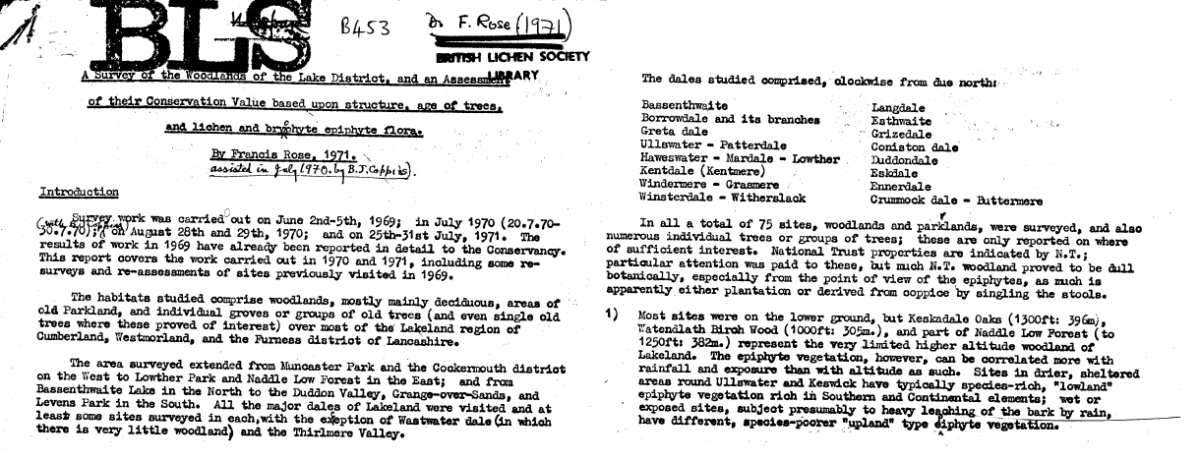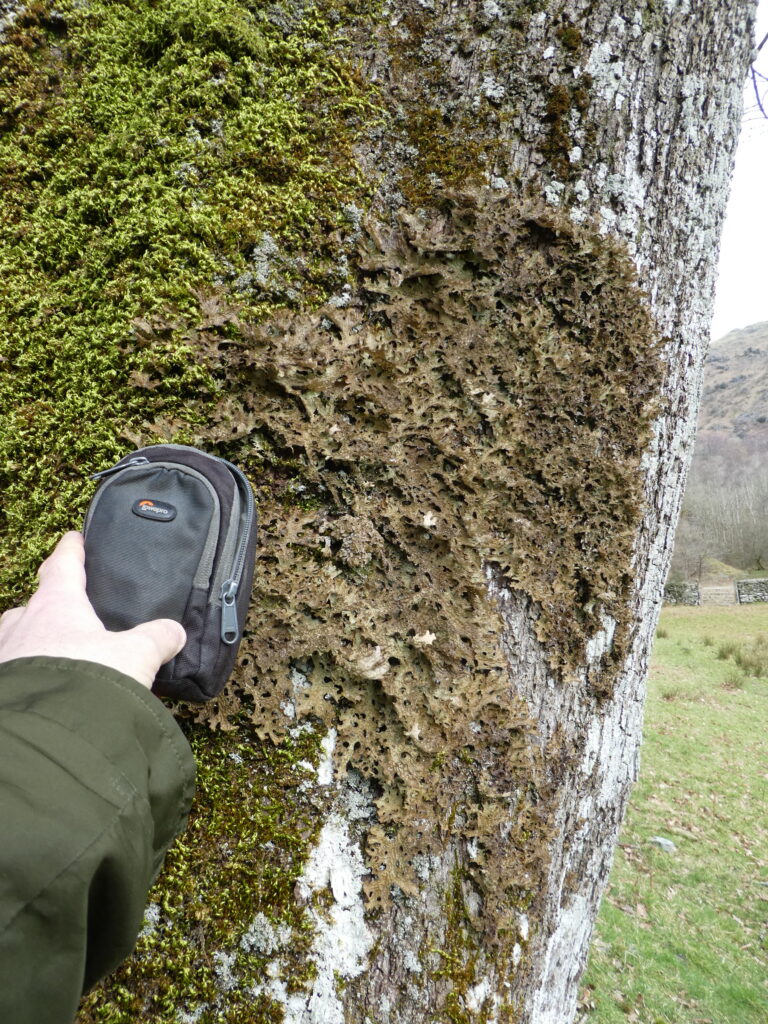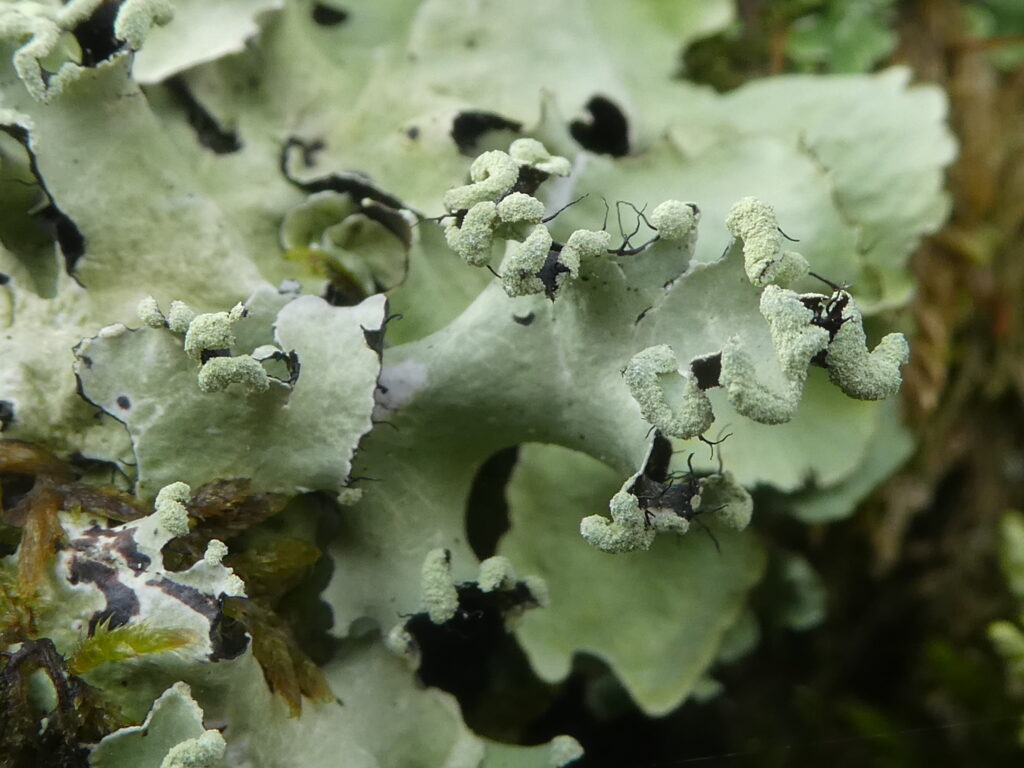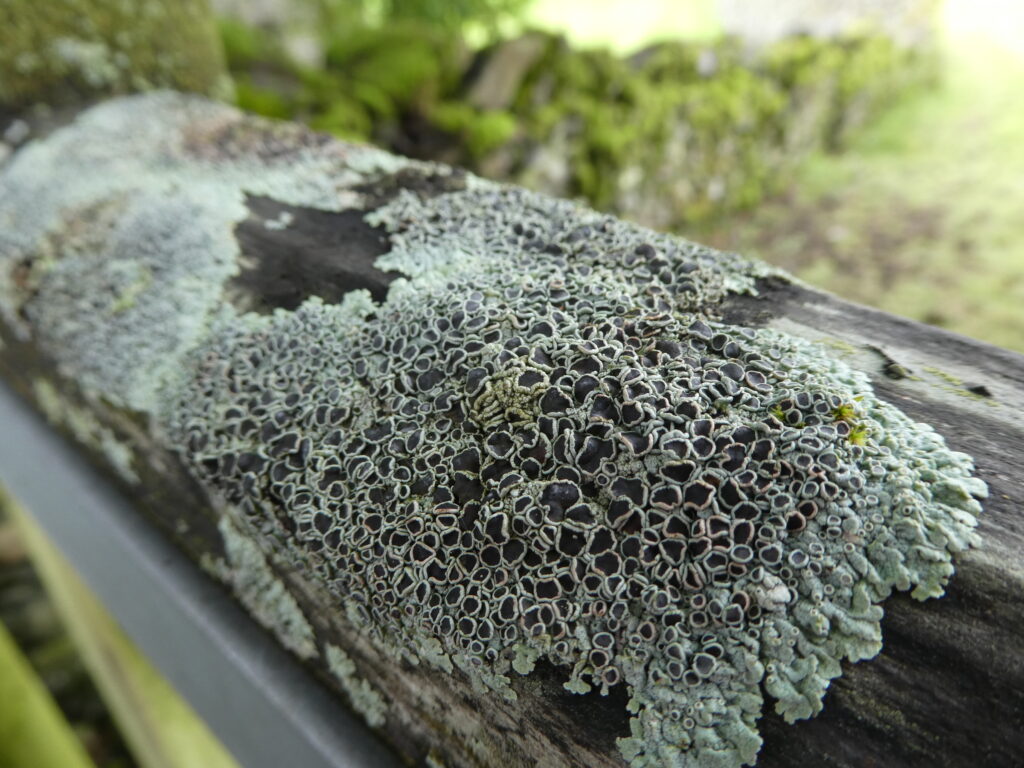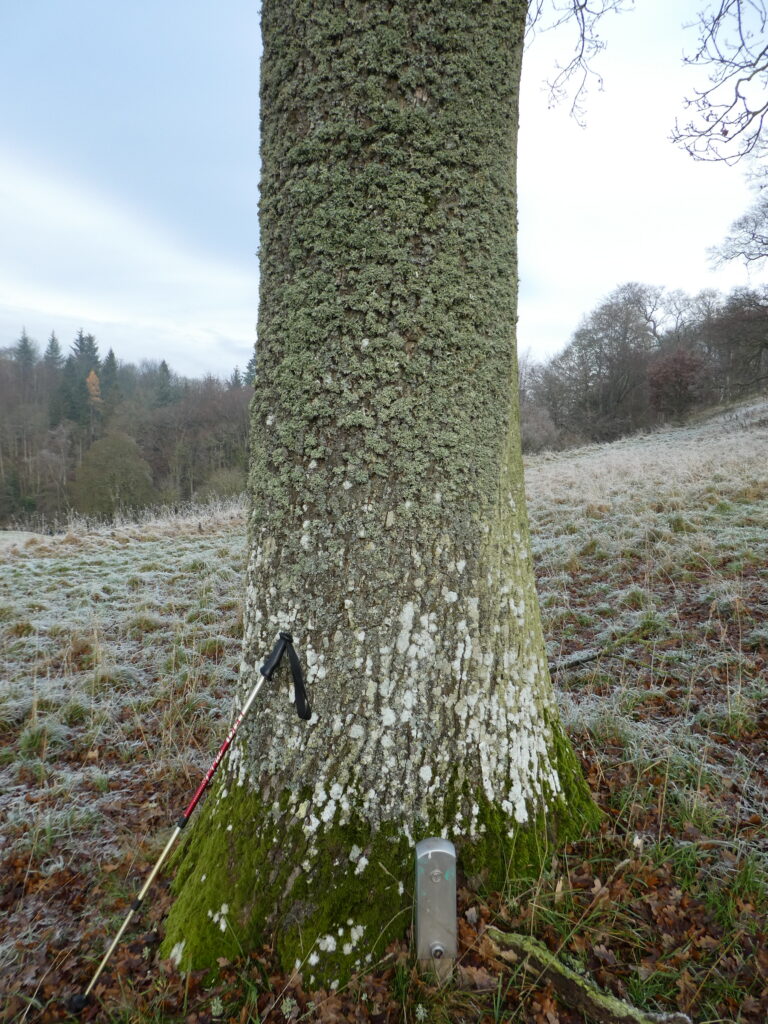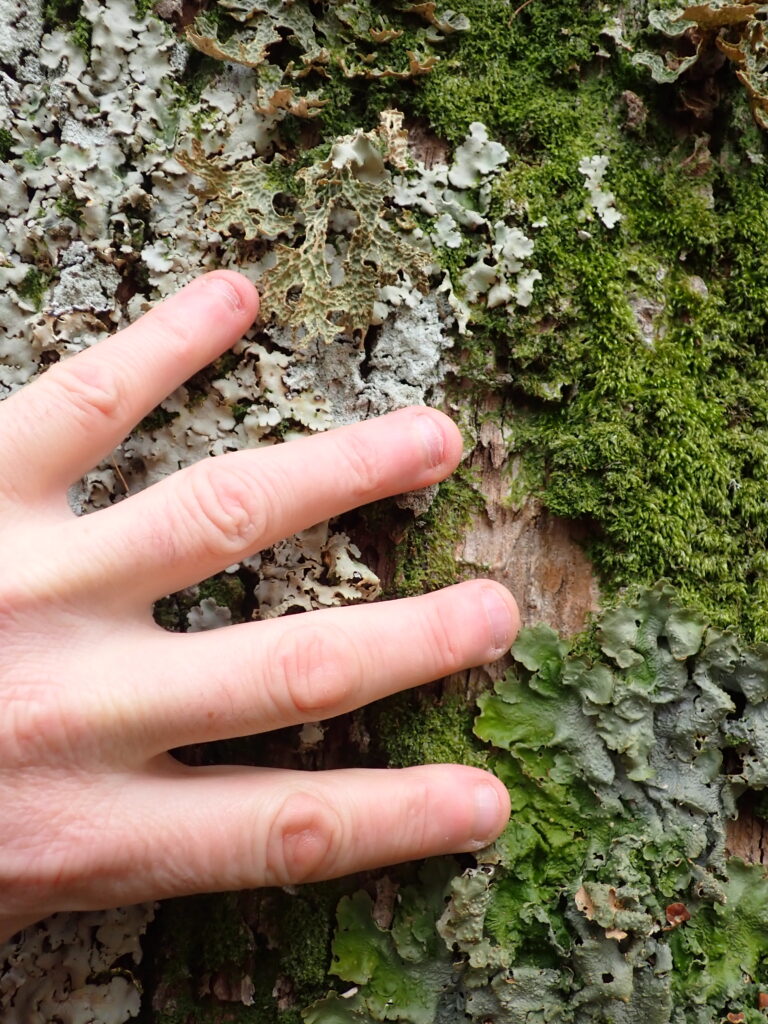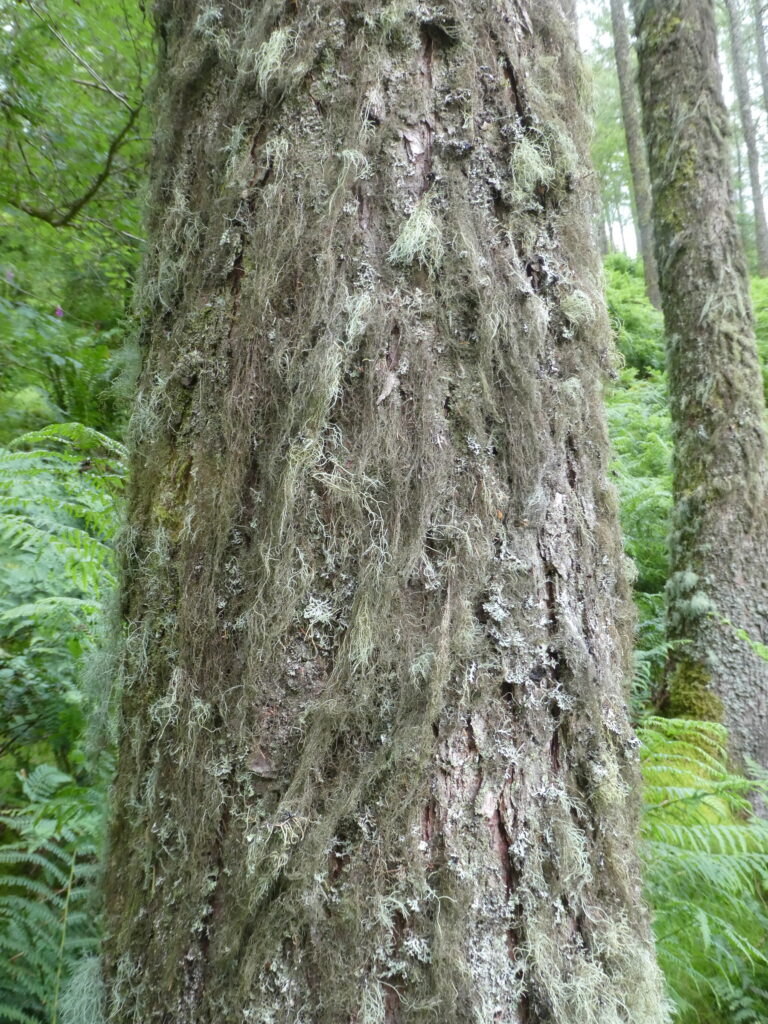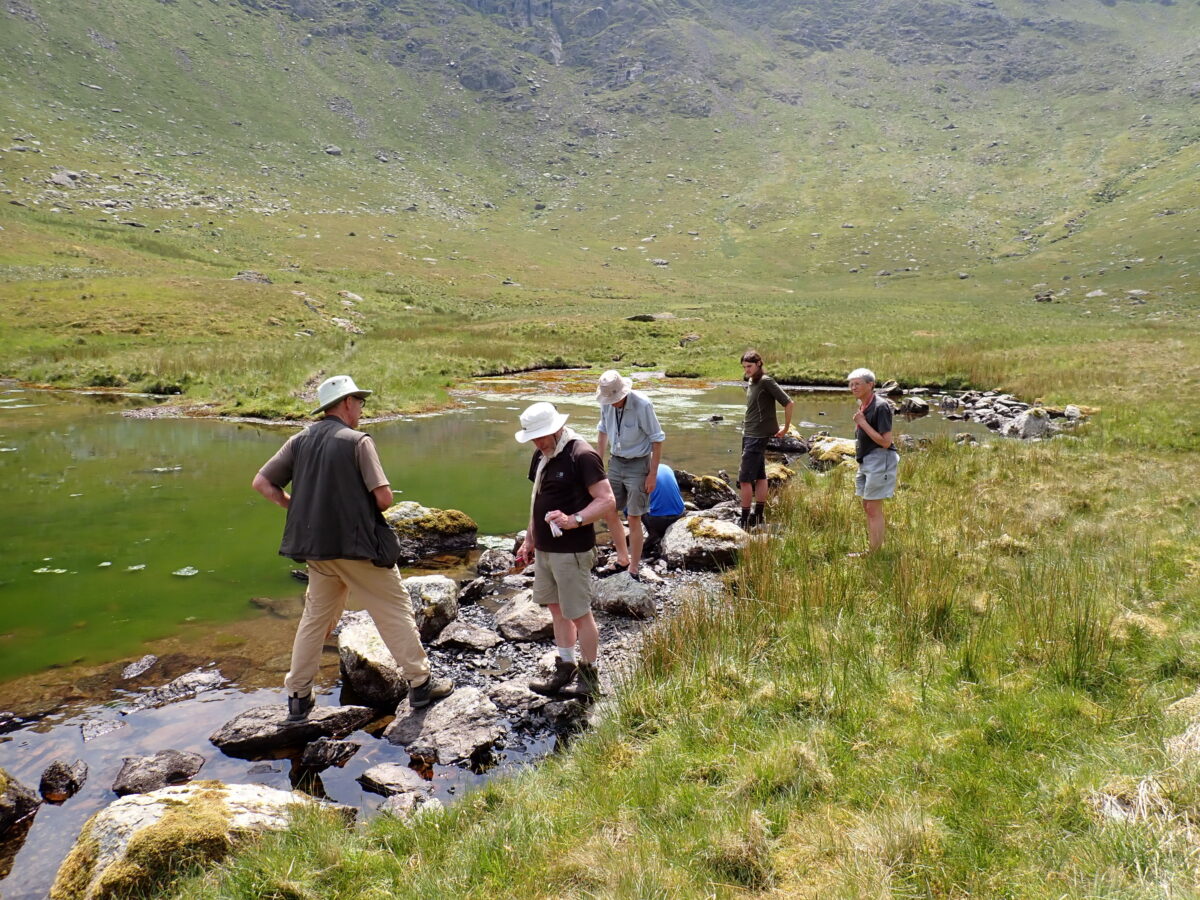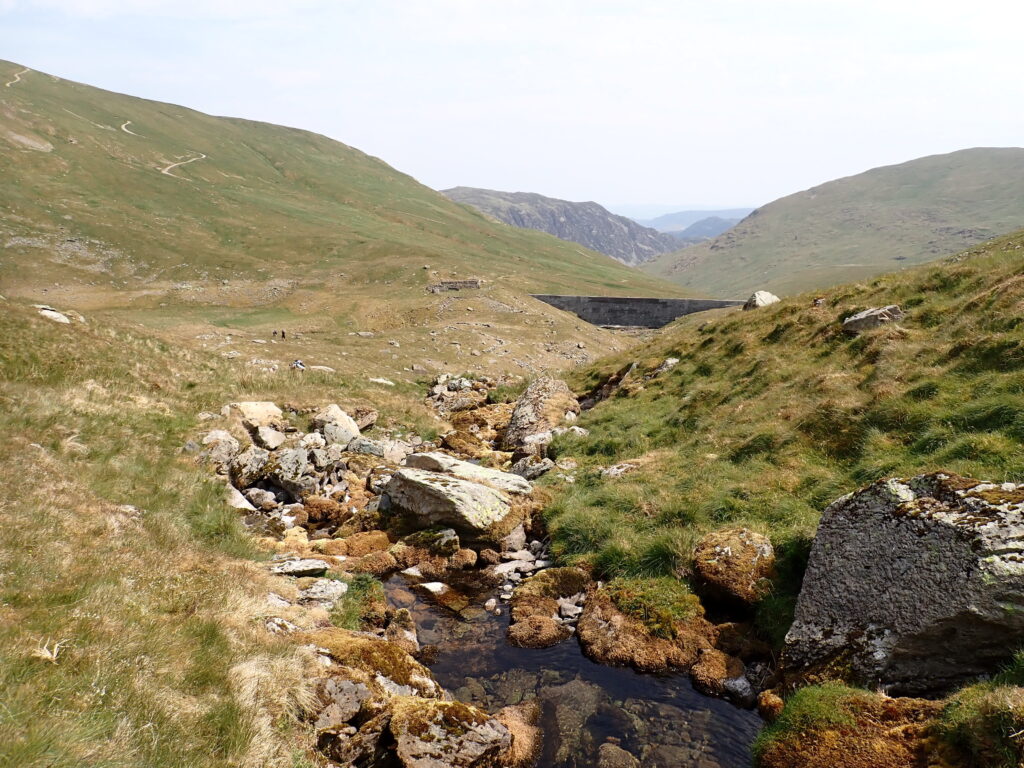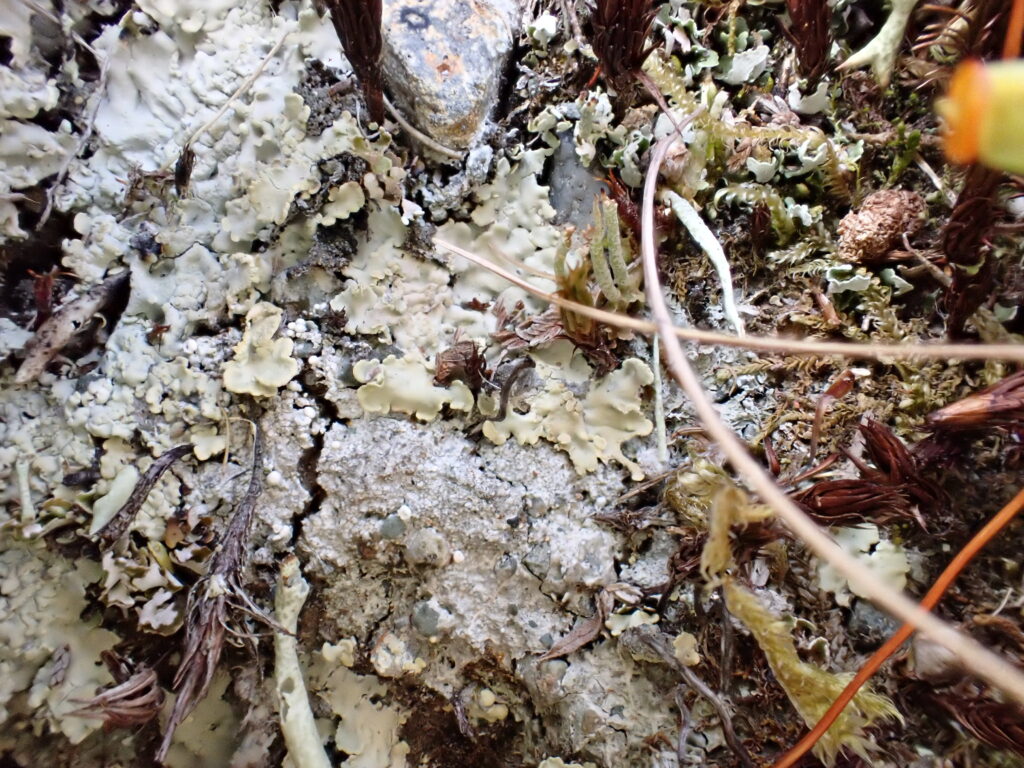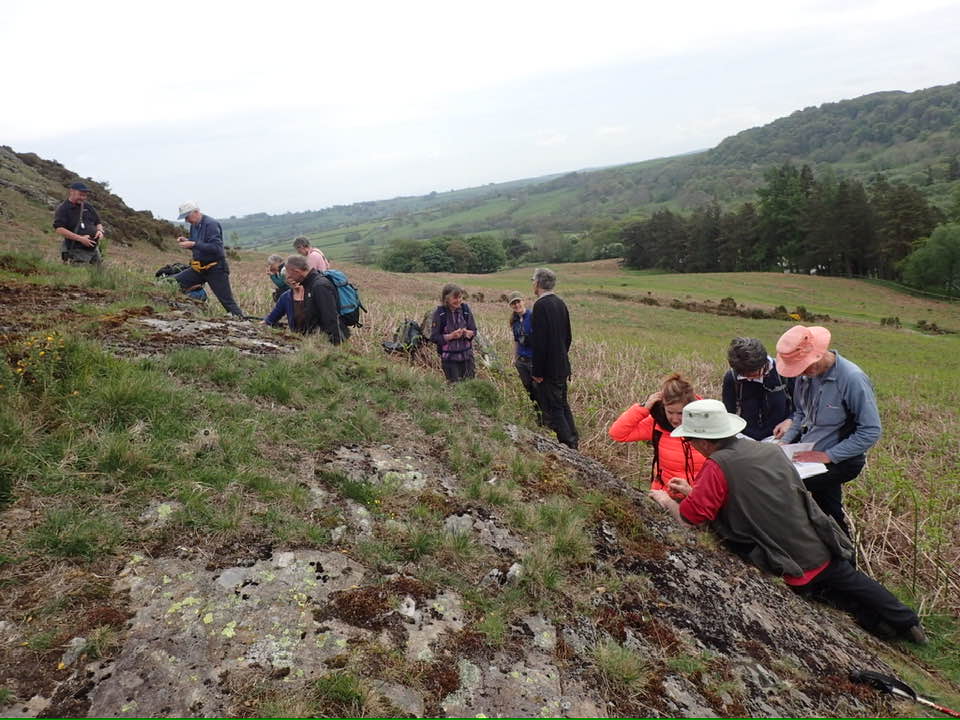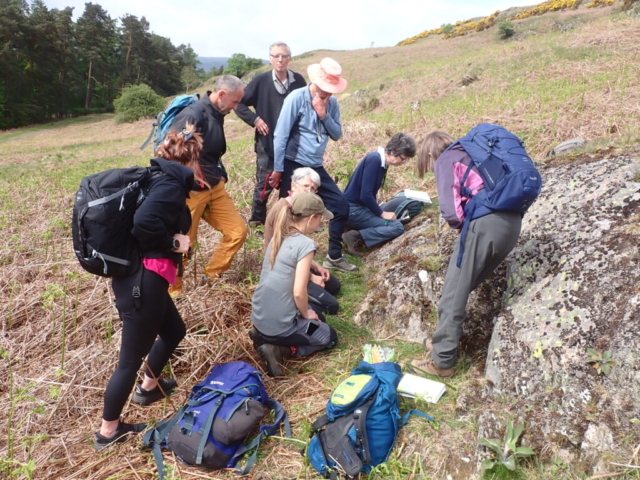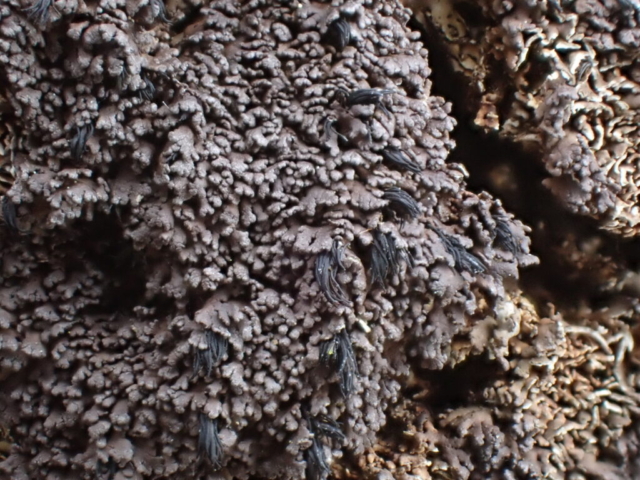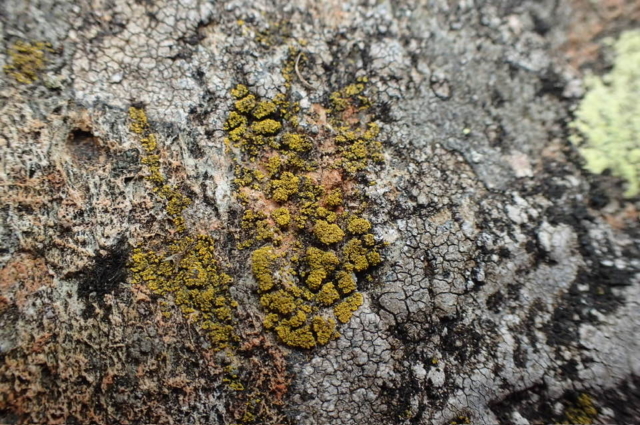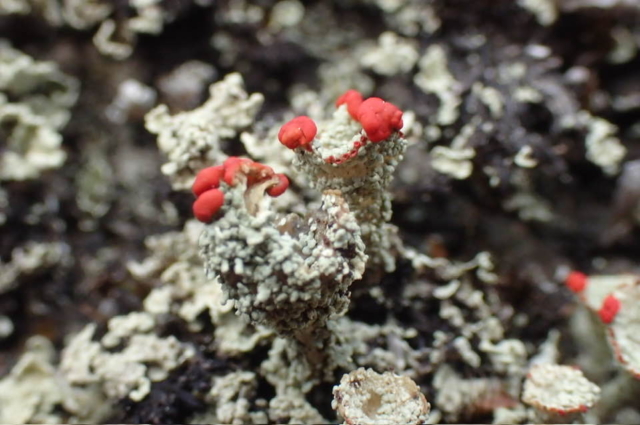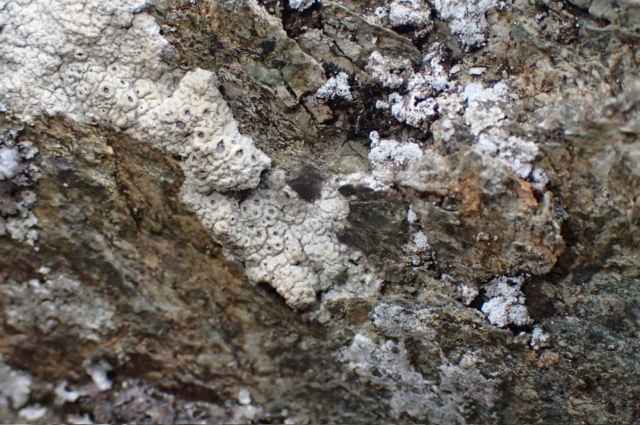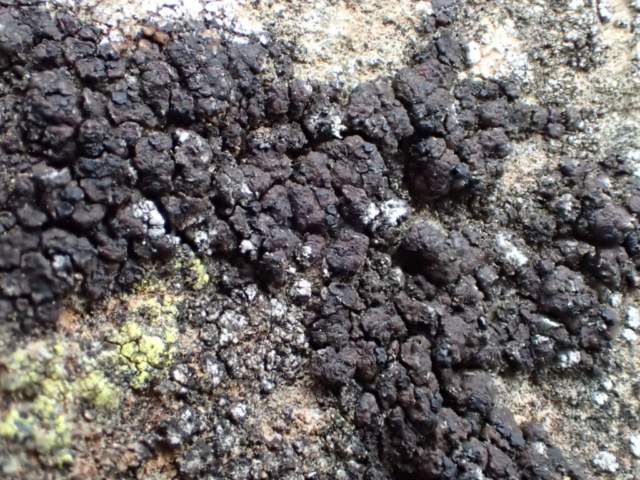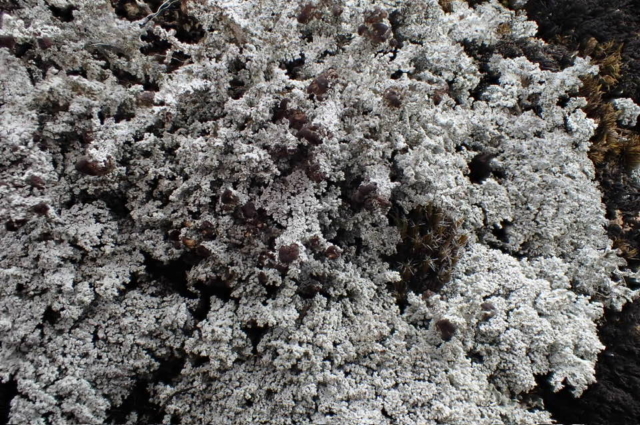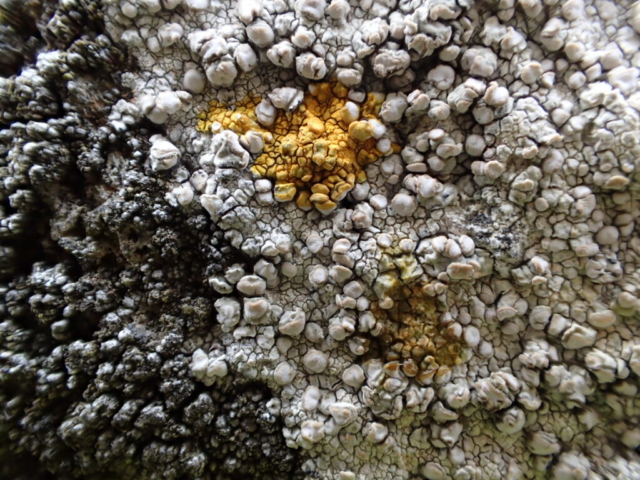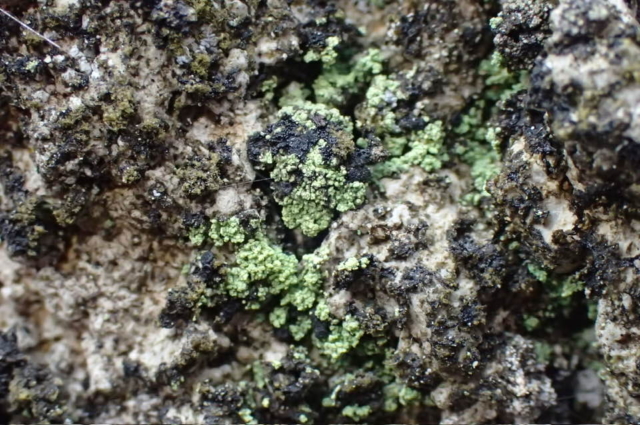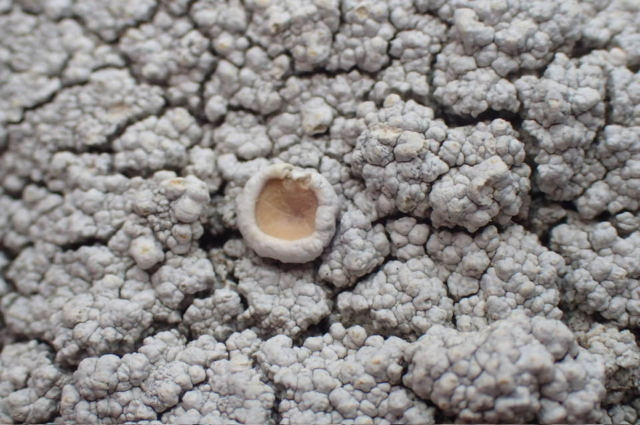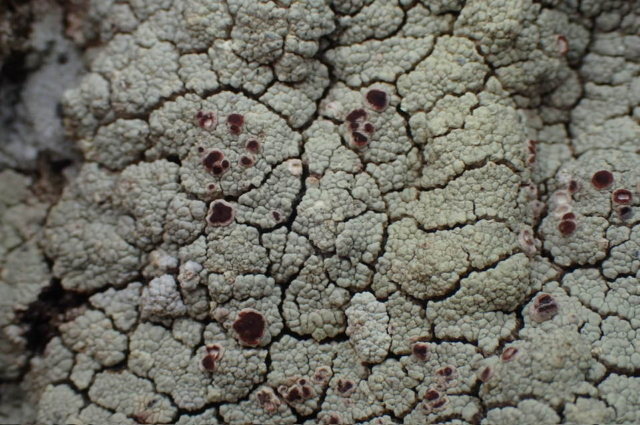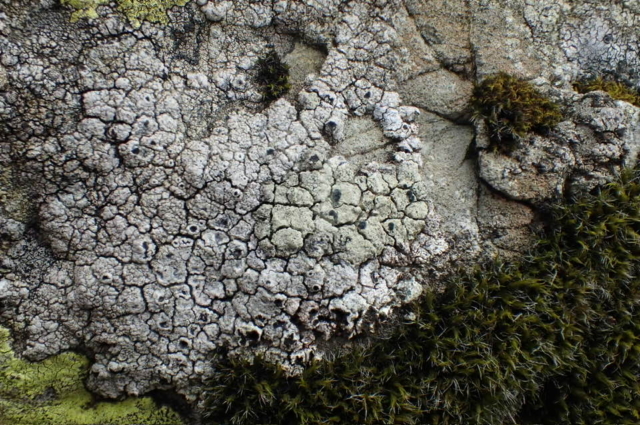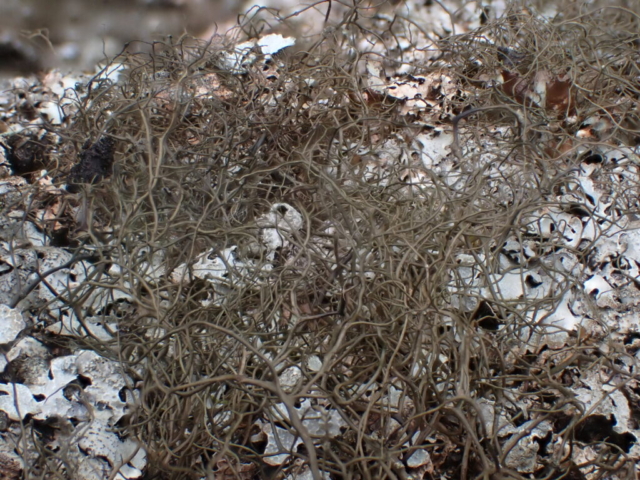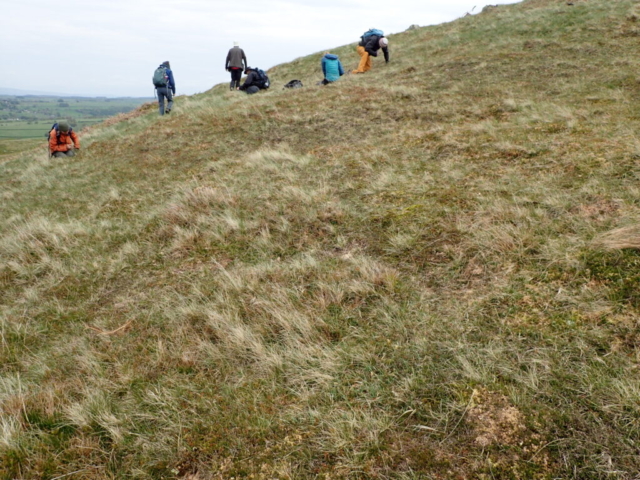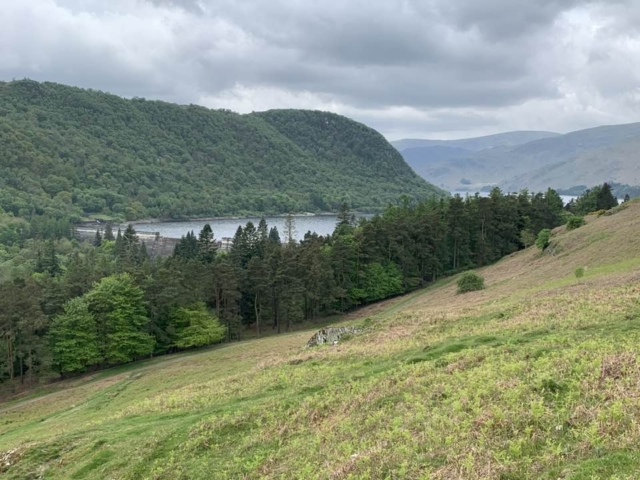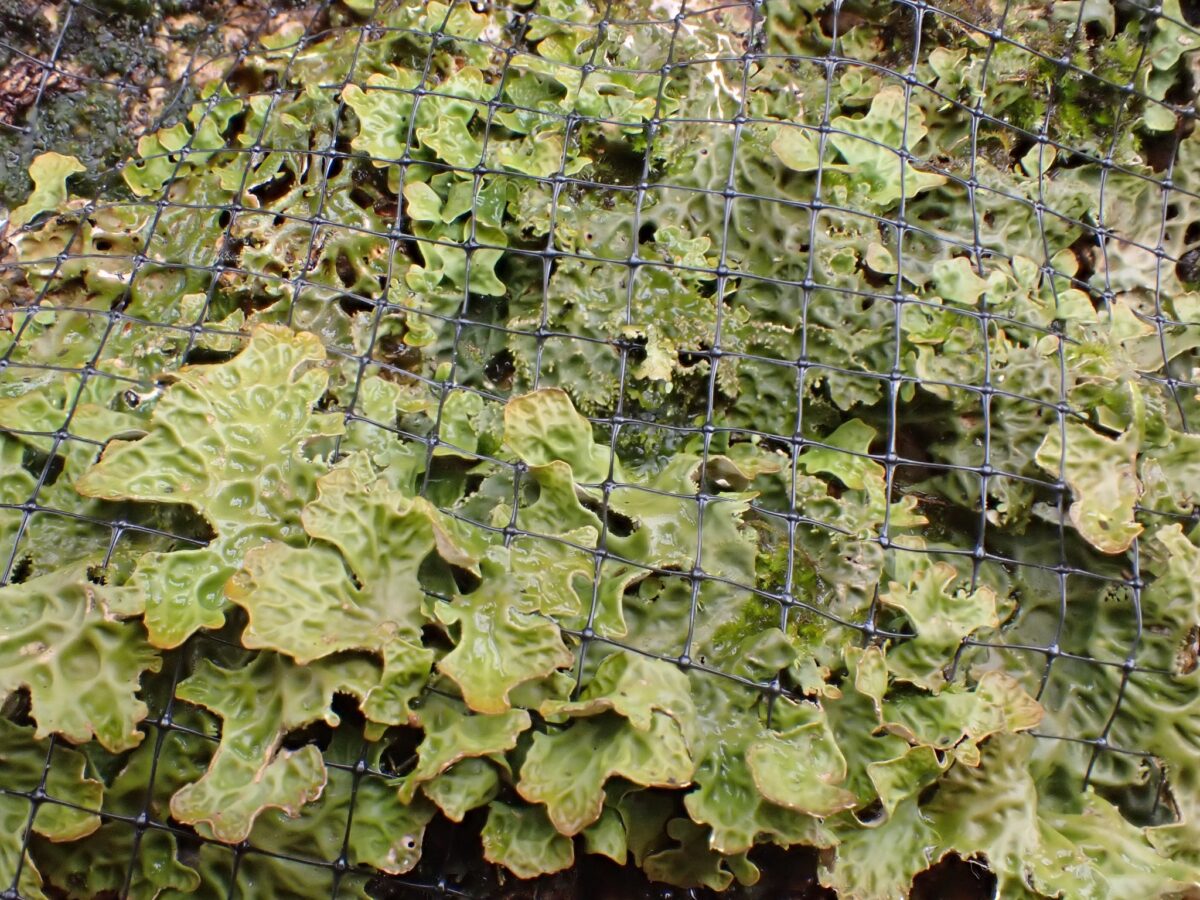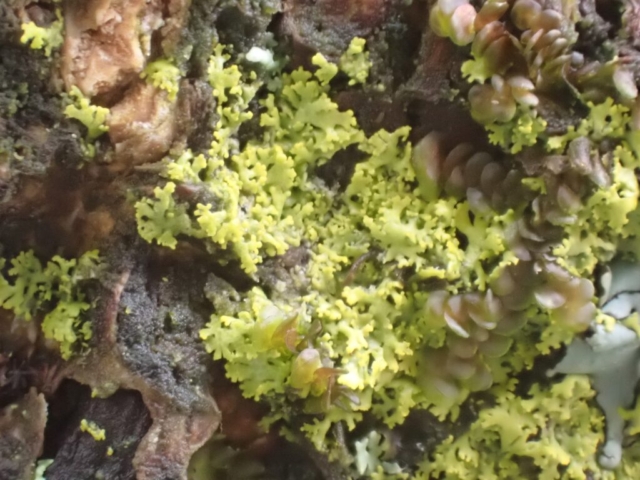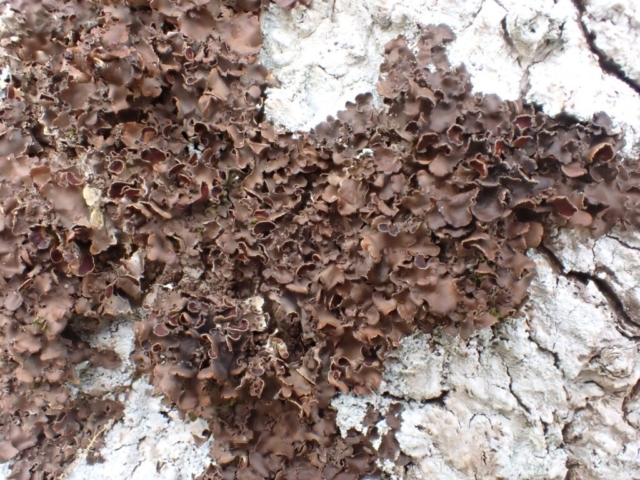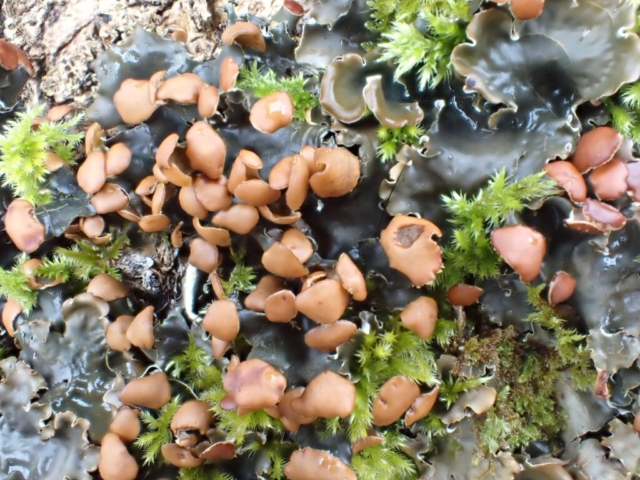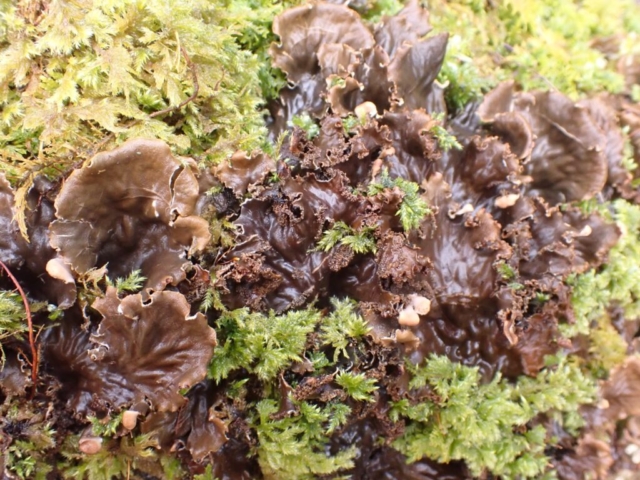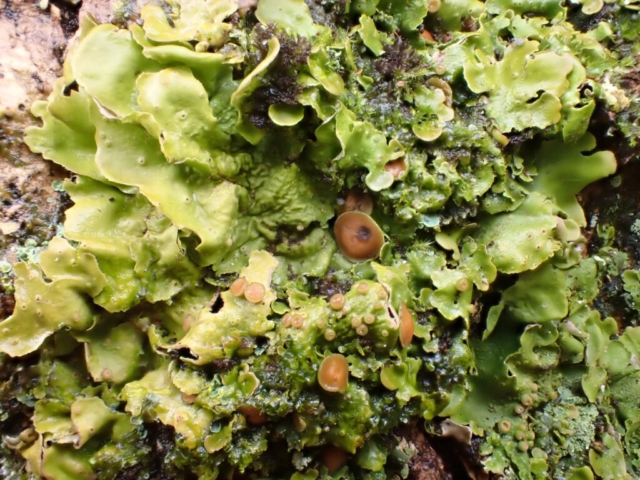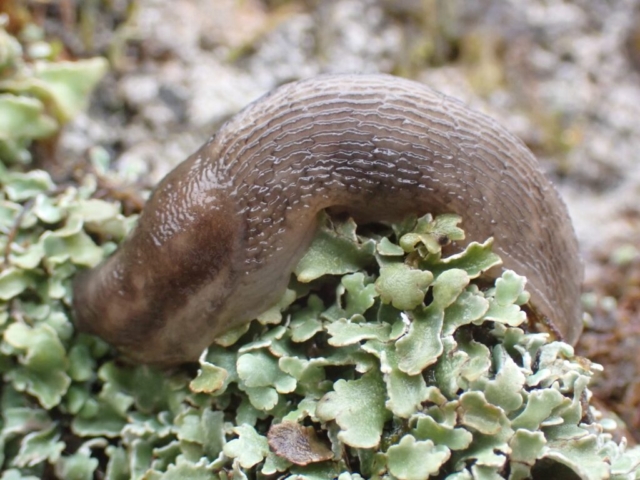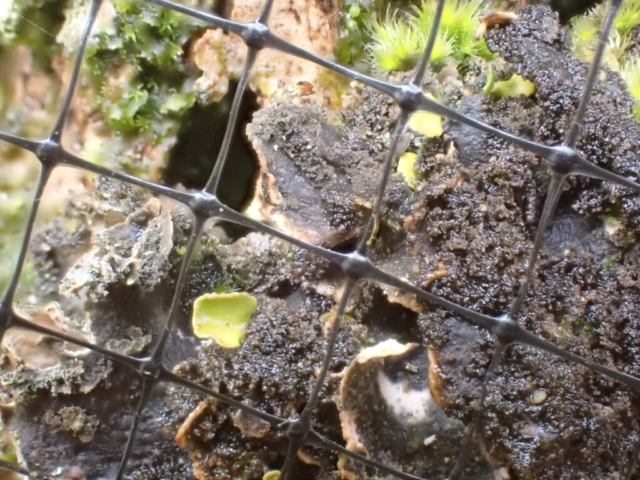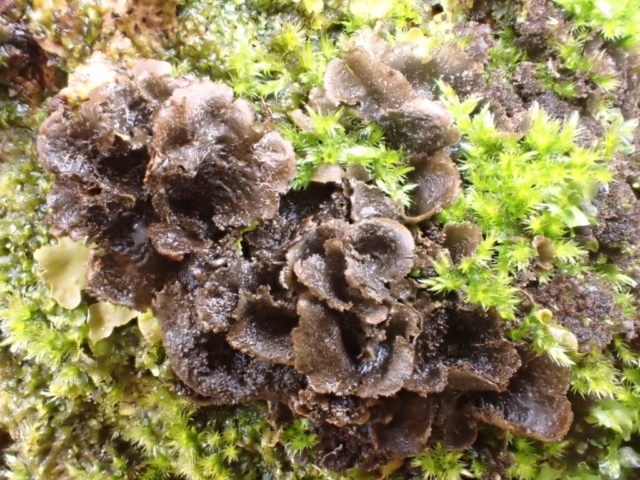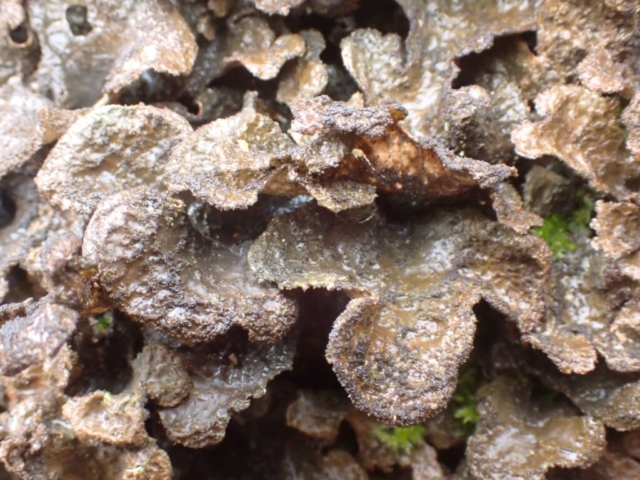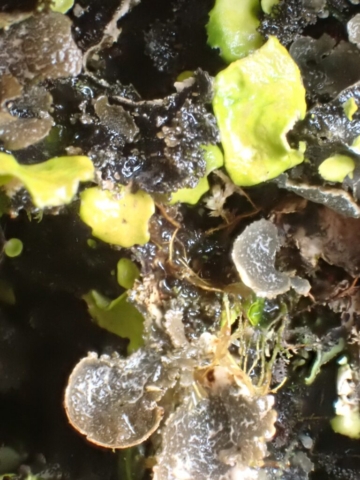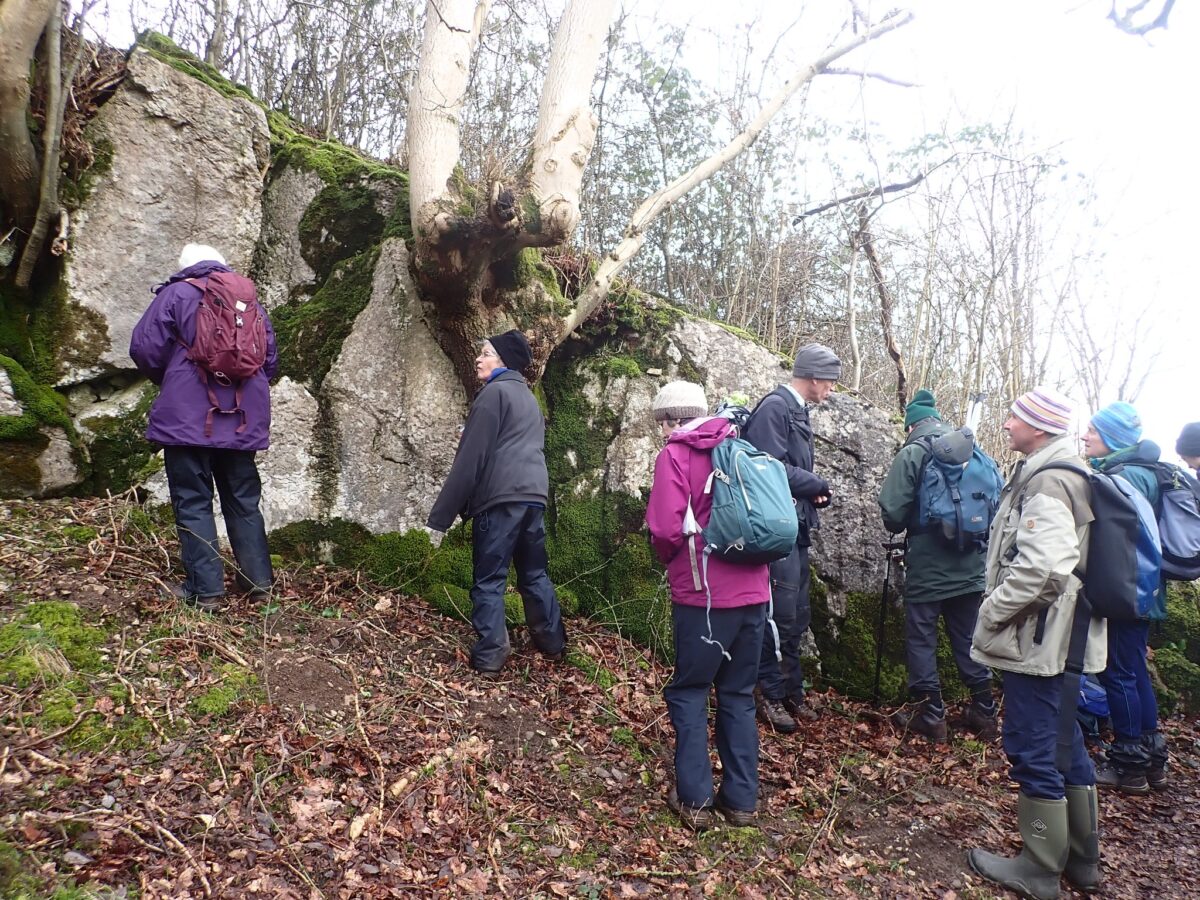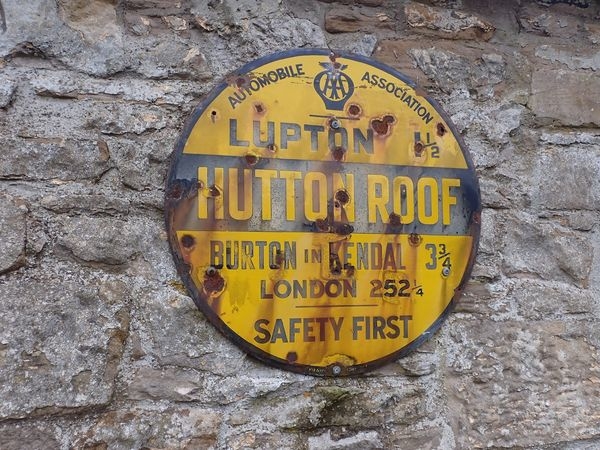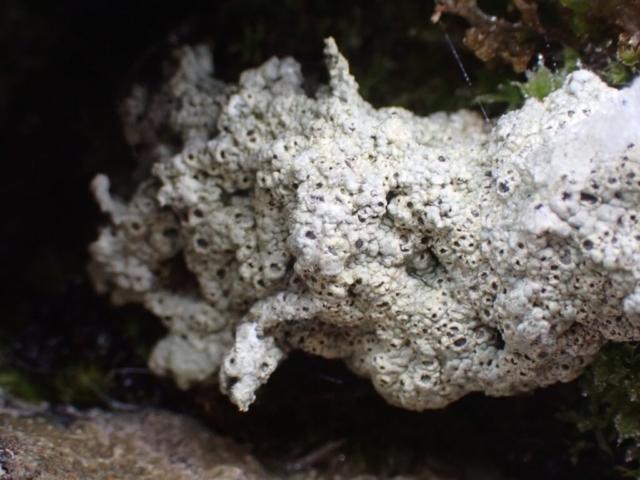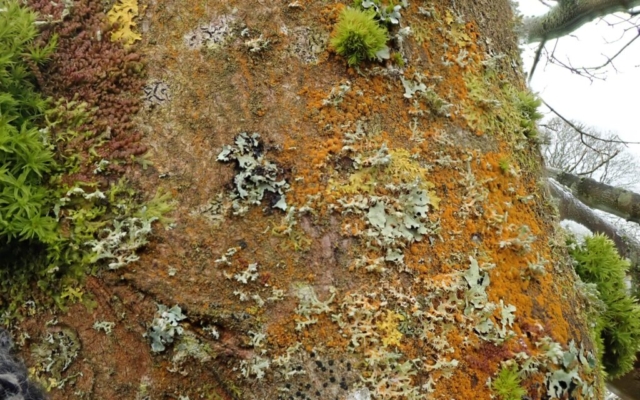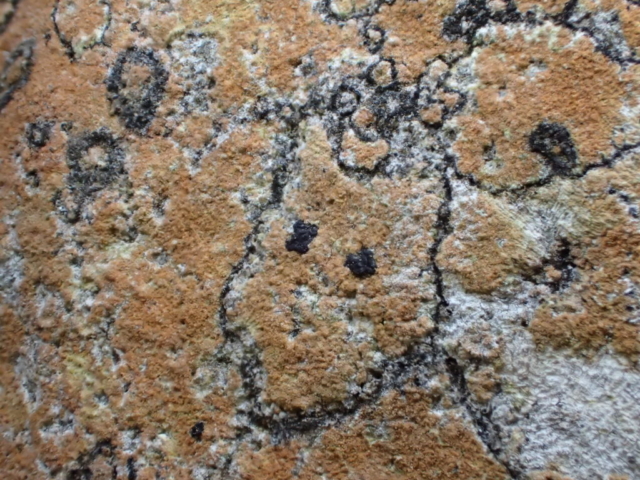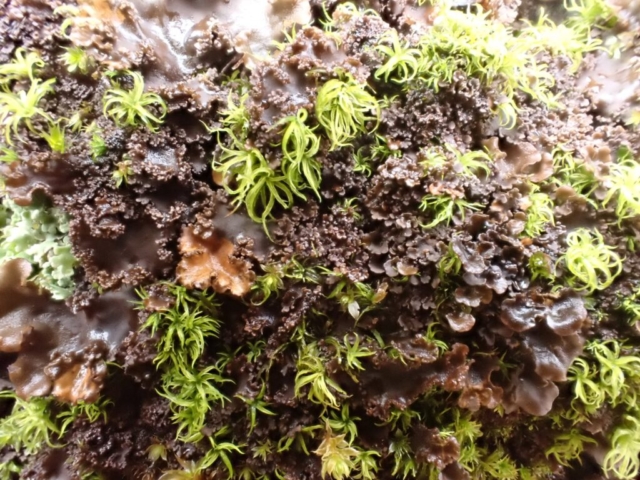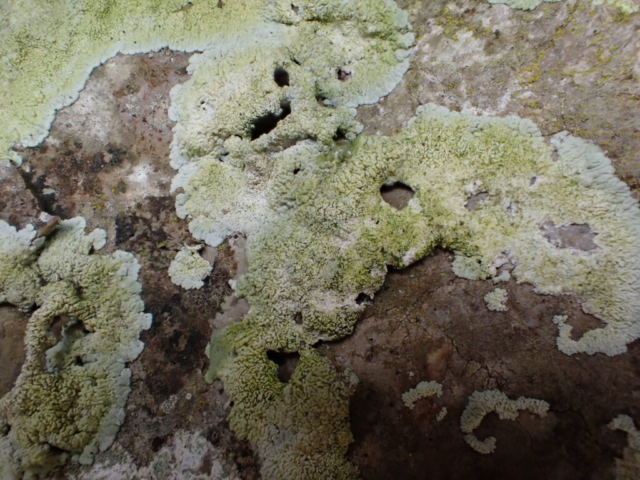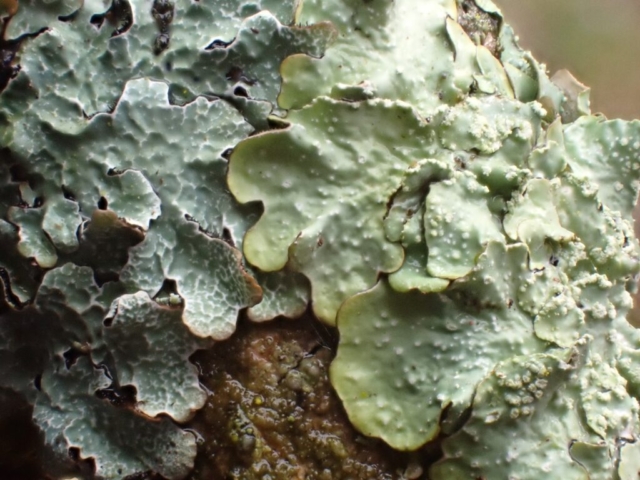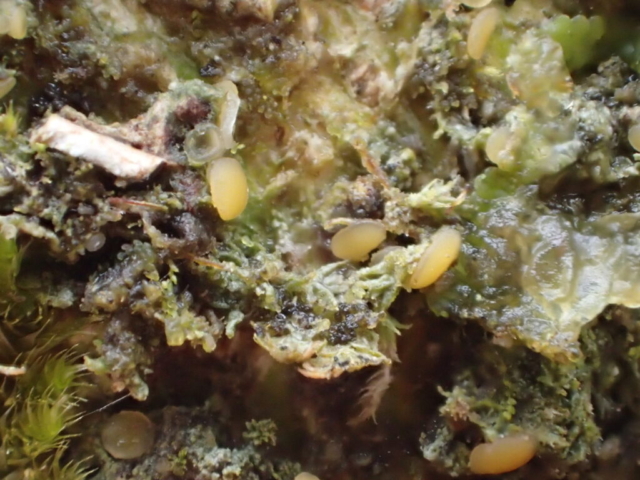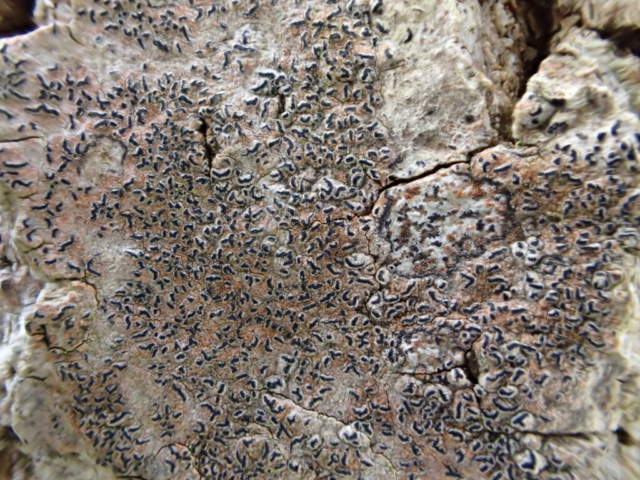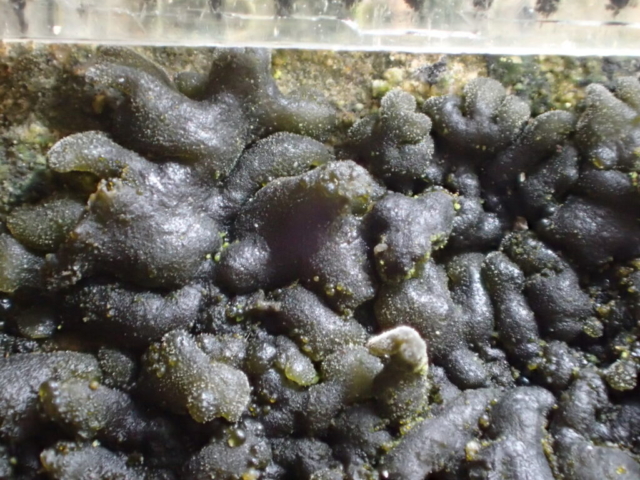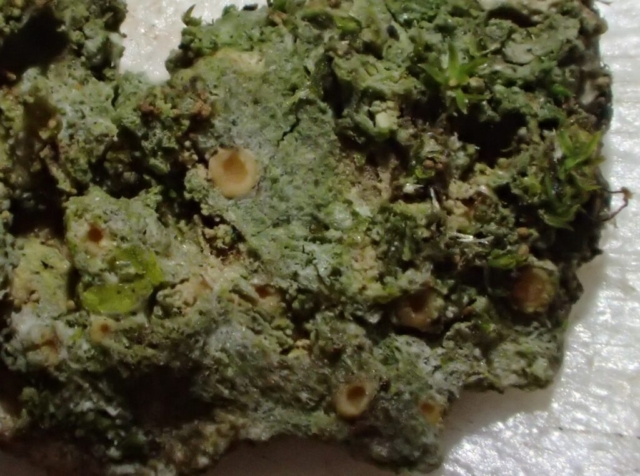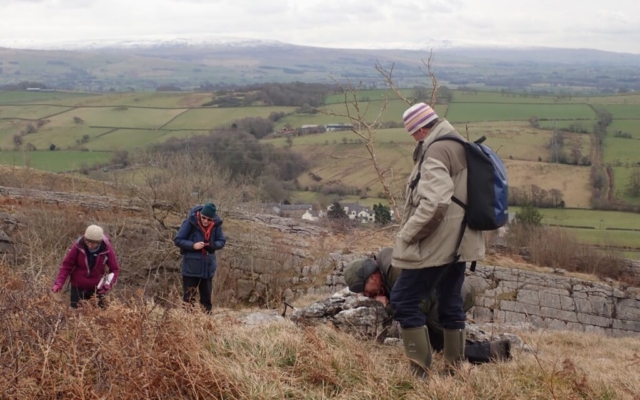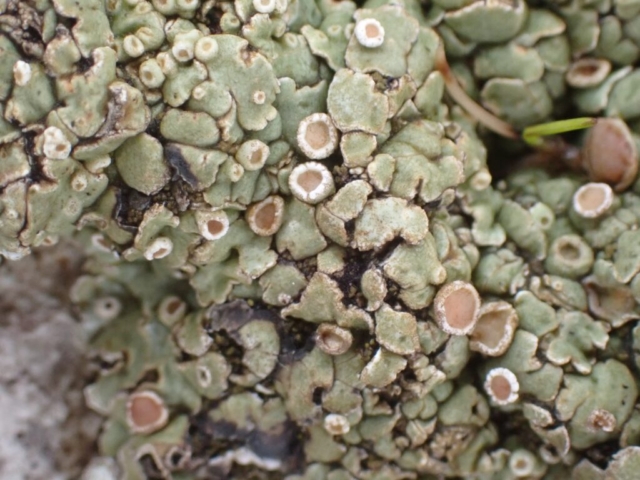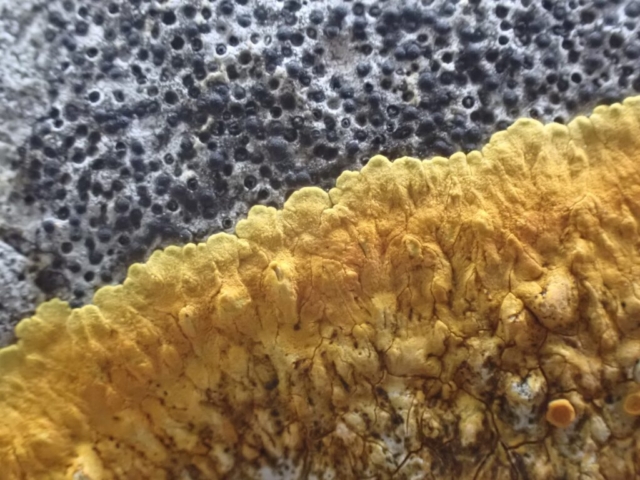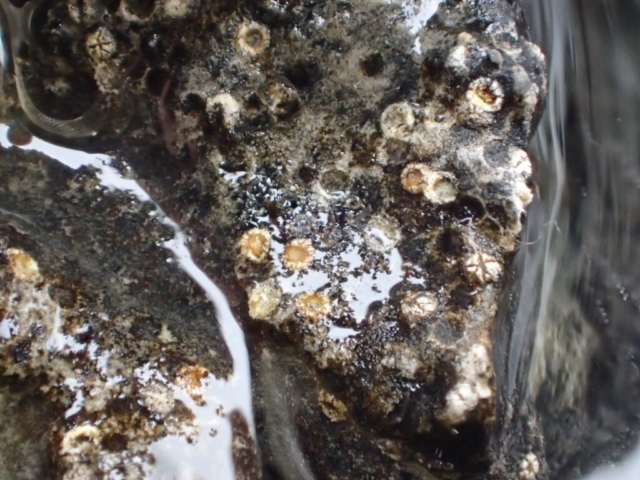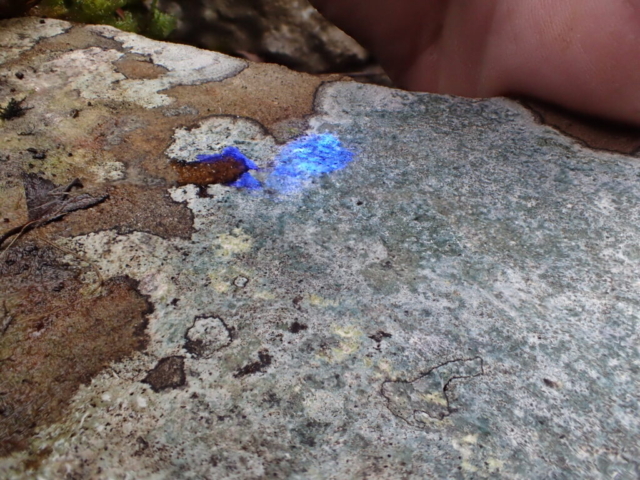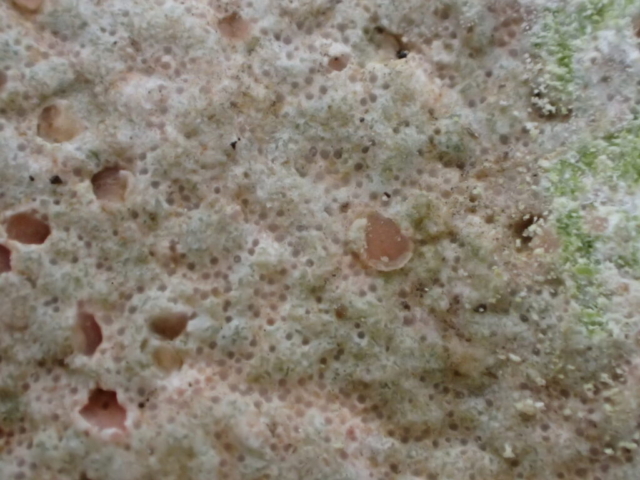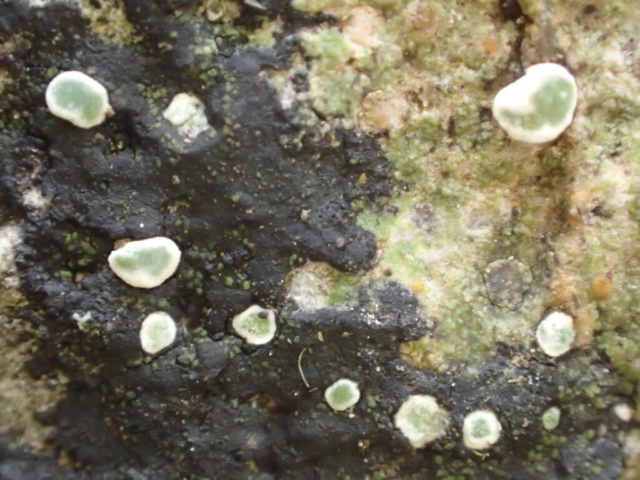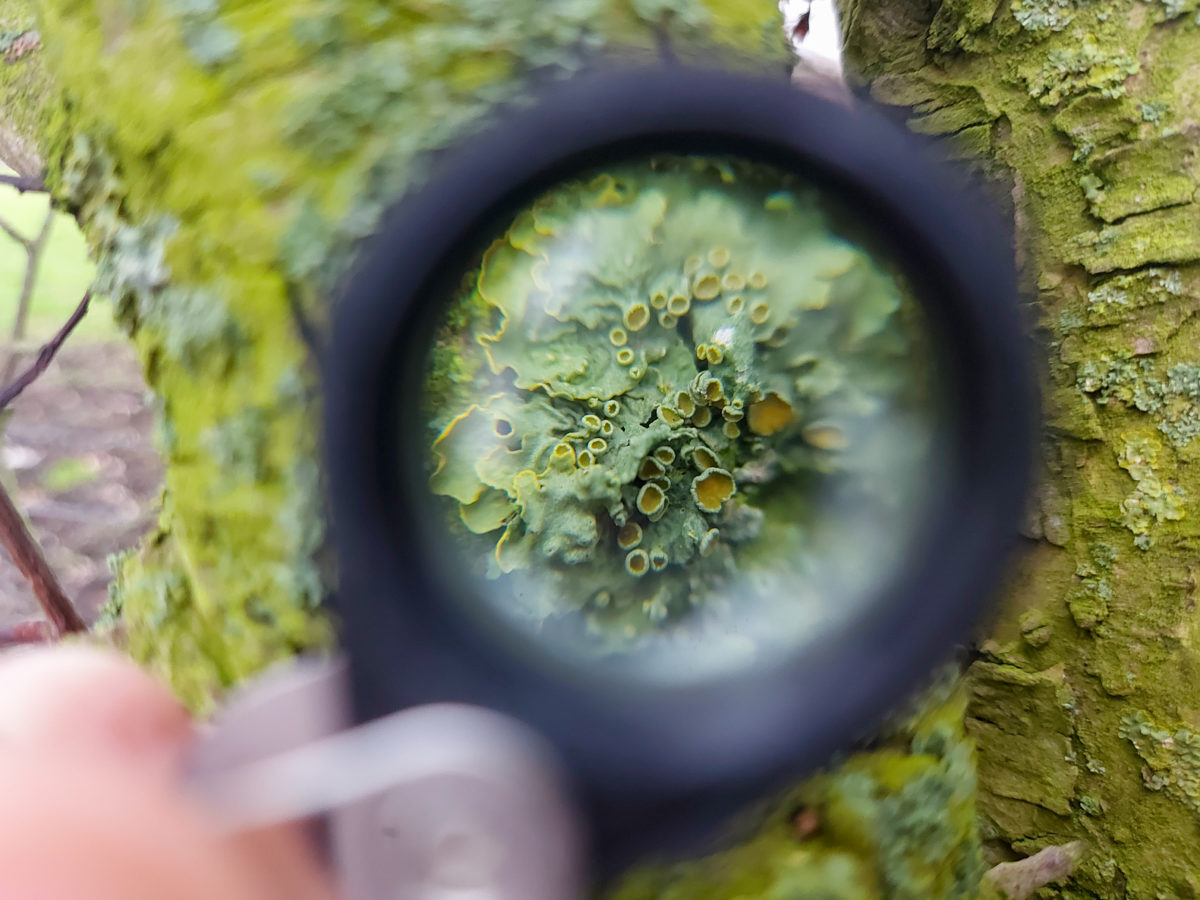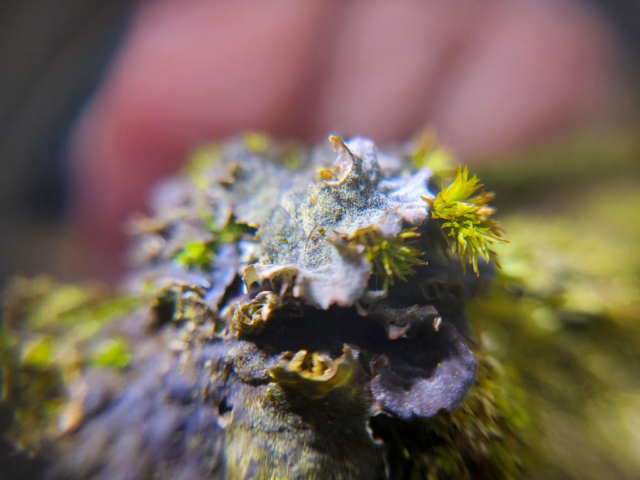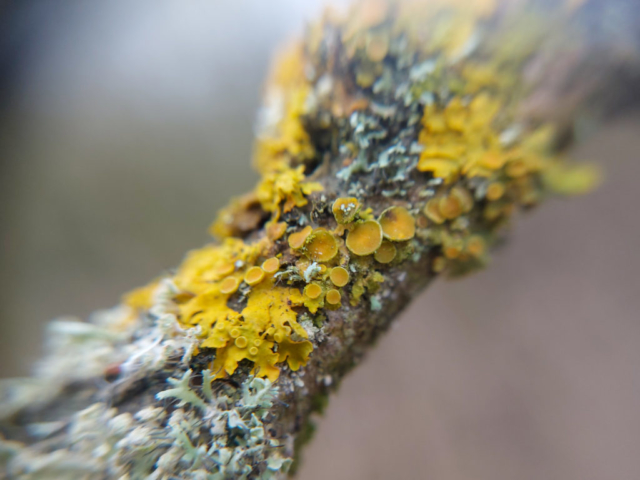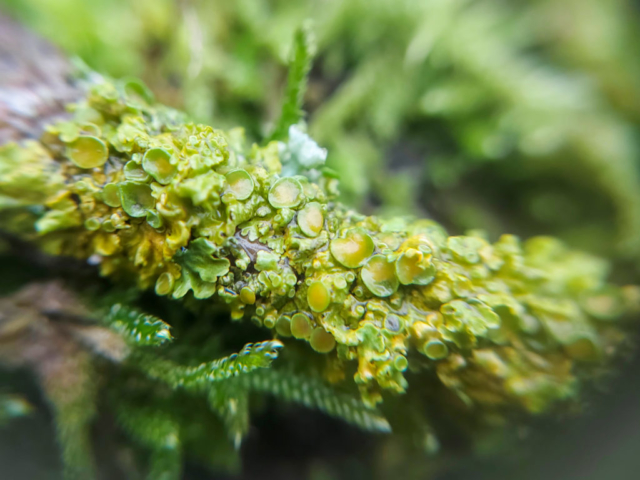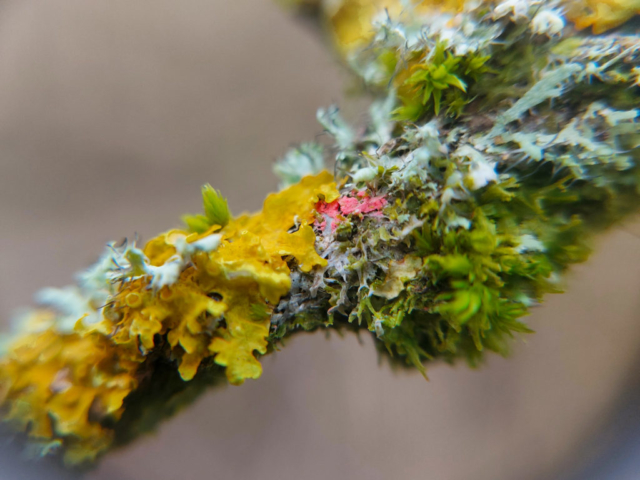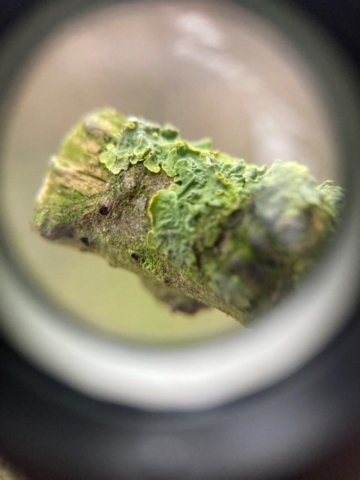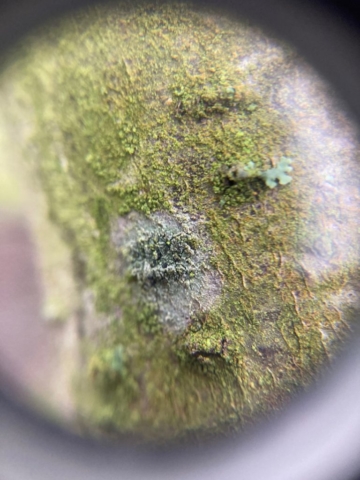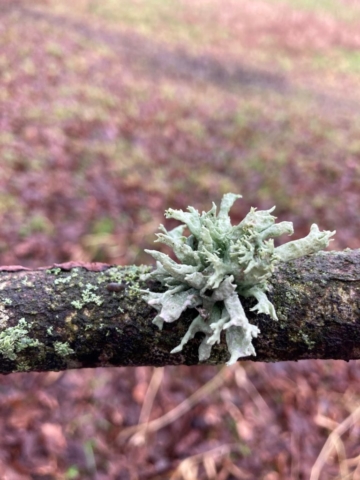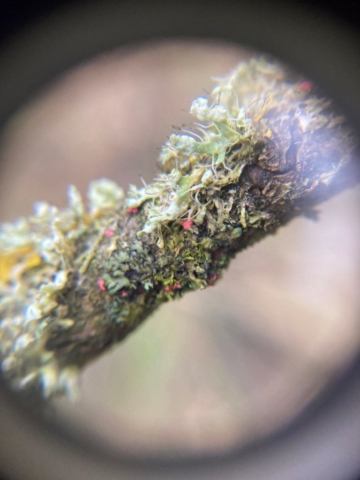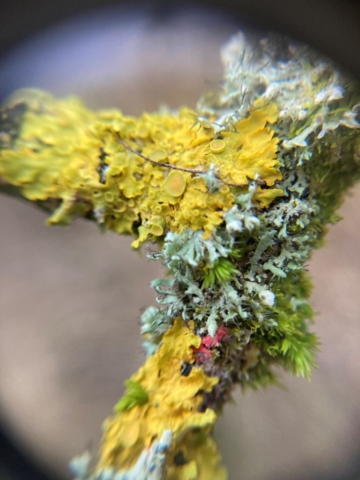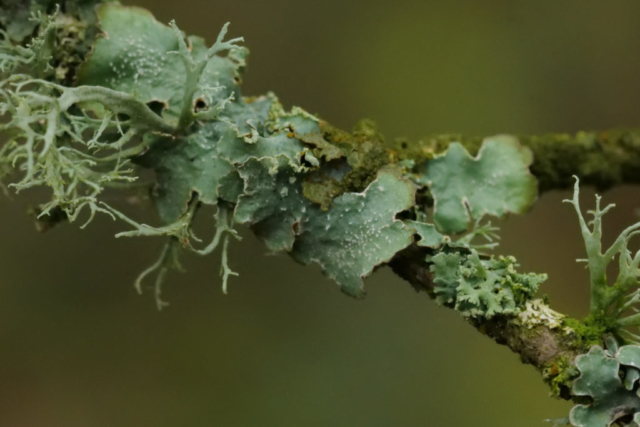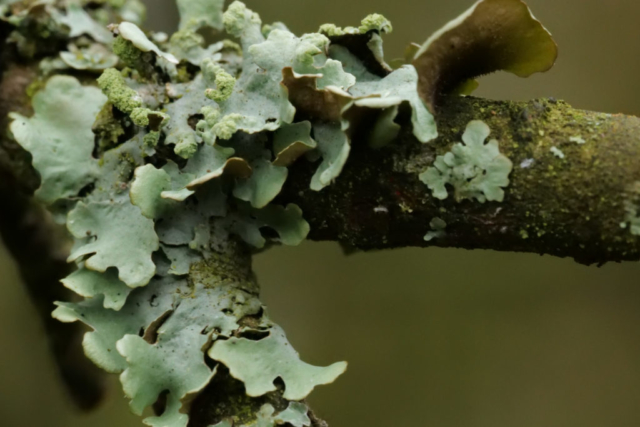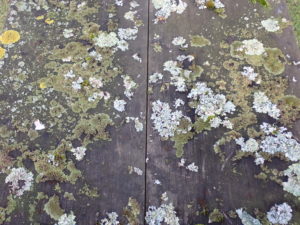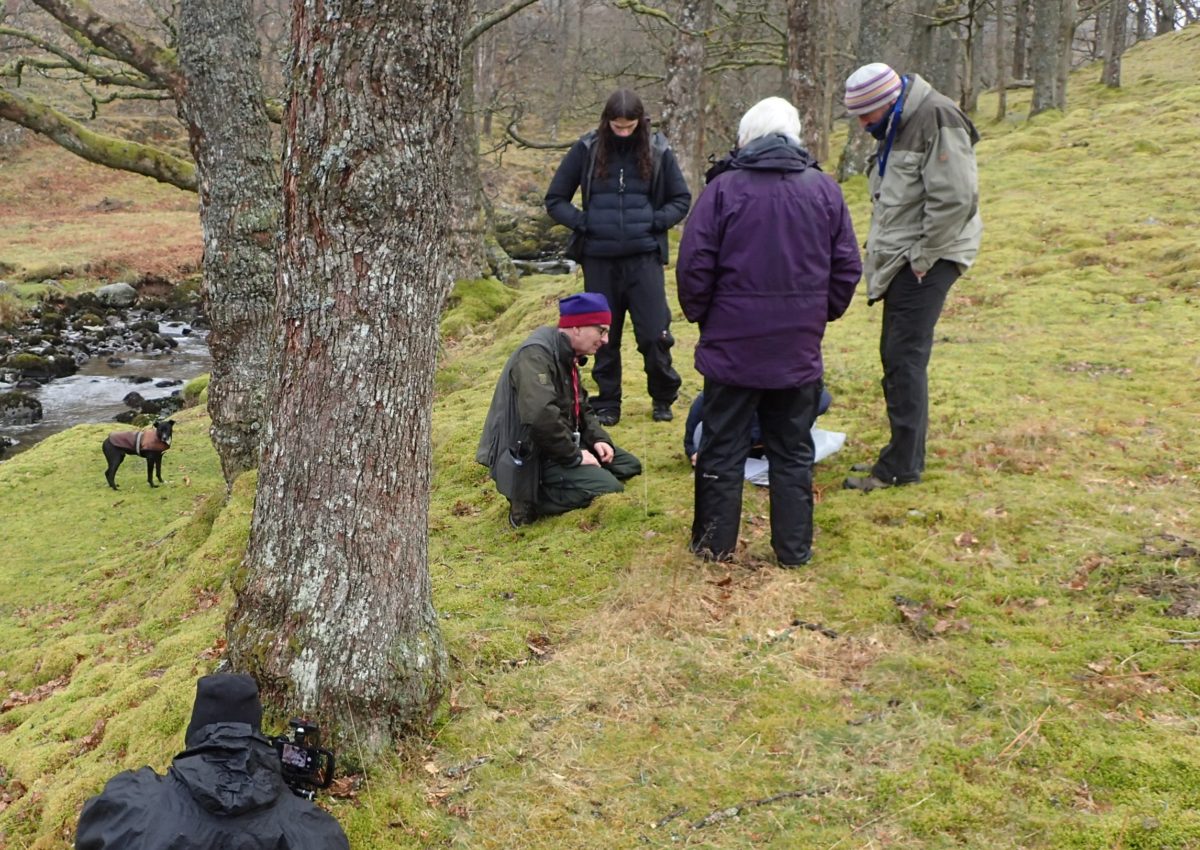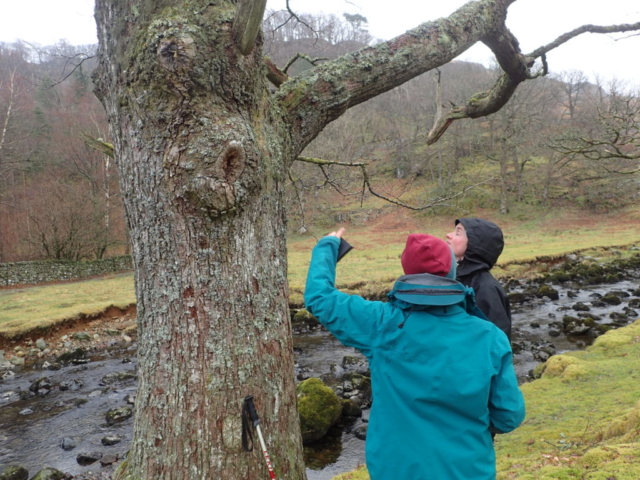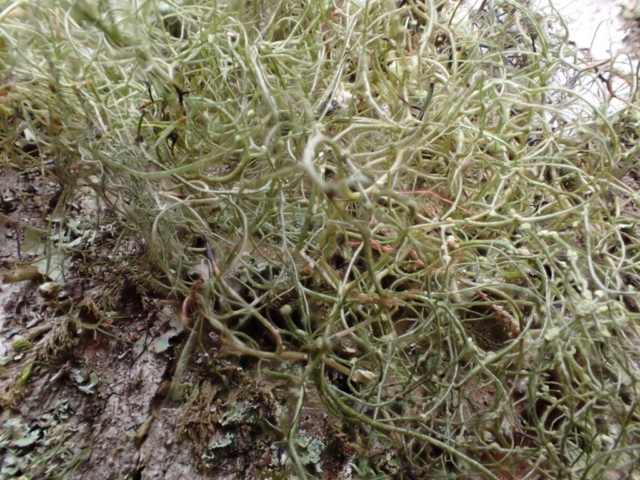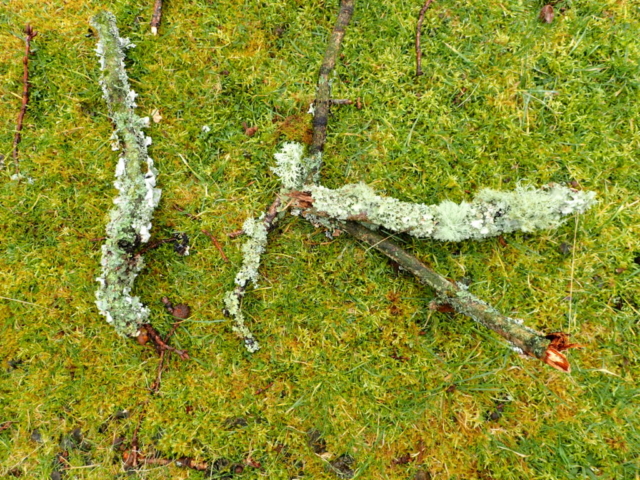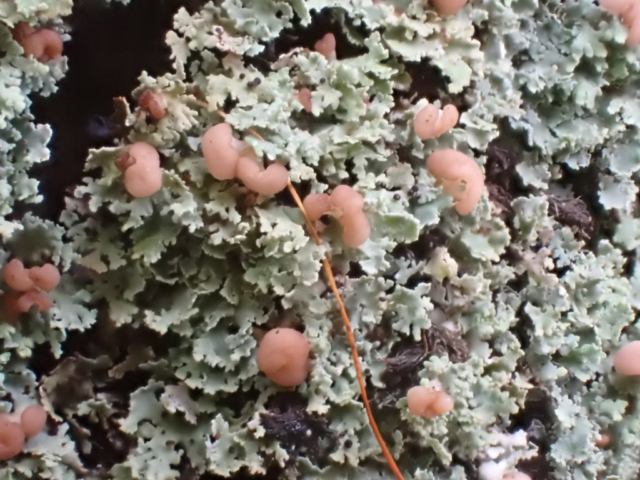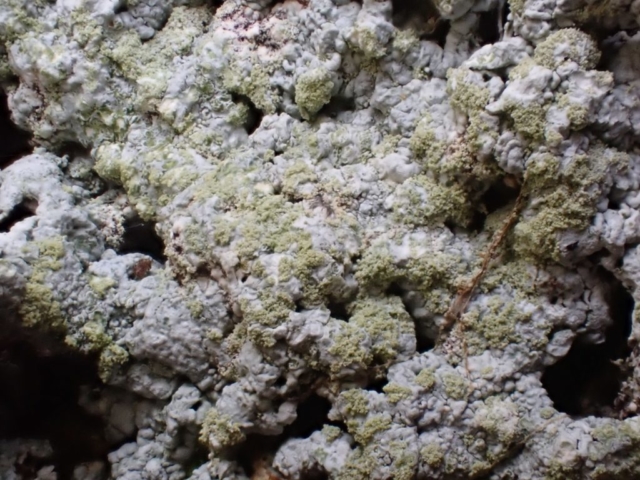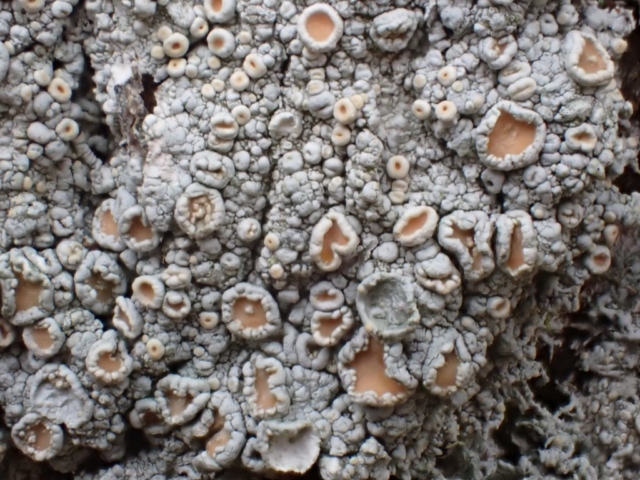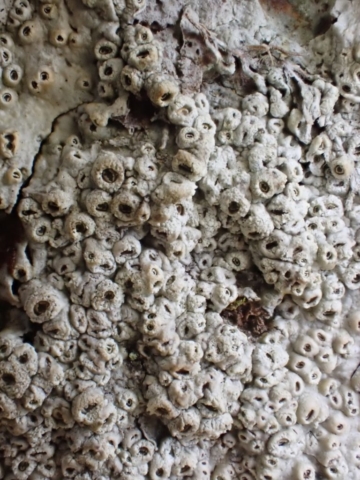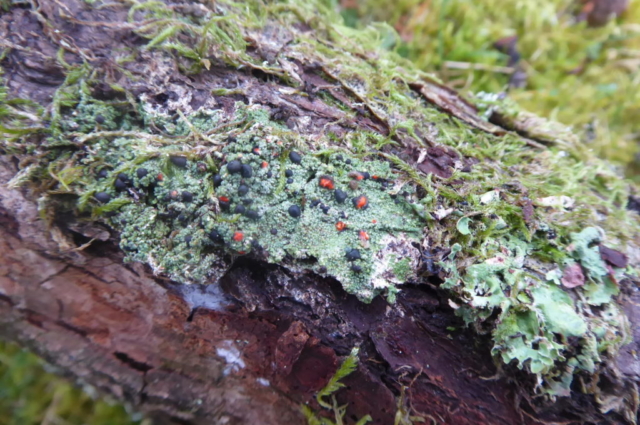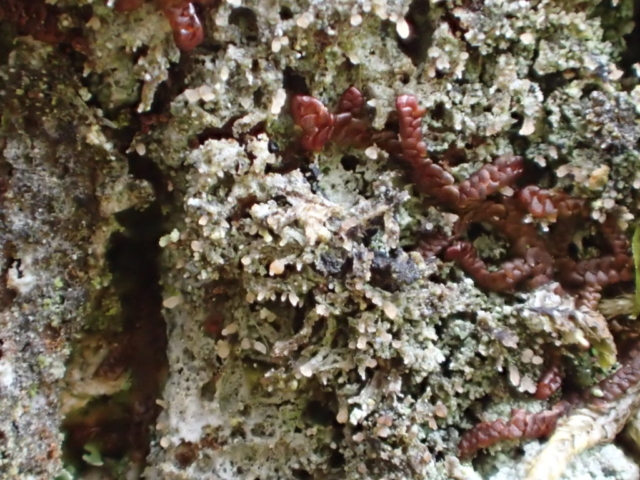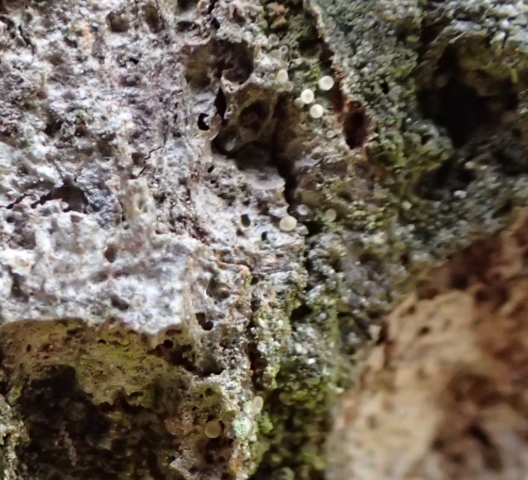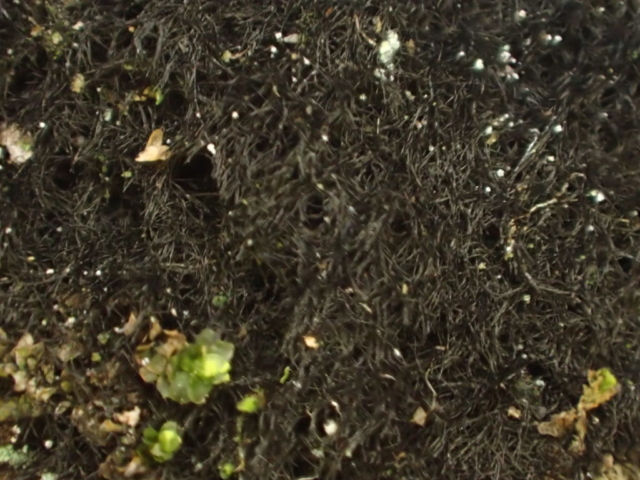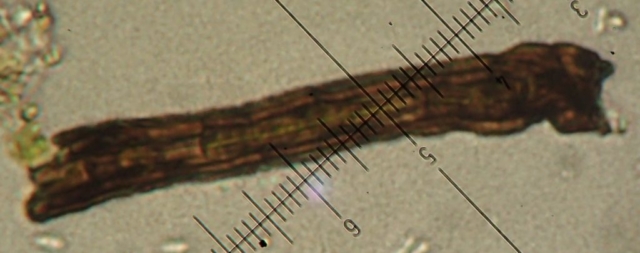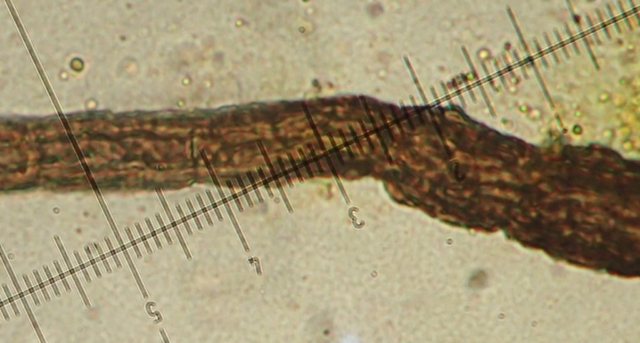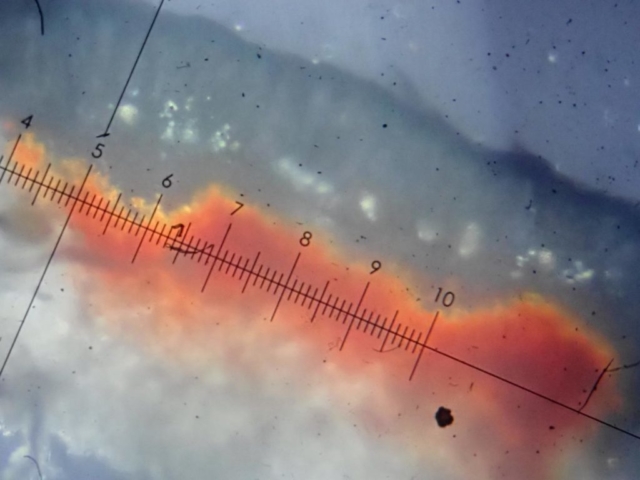Lindrigg Scars, Mallerstang
A day of fine weather following overnight rain gave perfect conditions as the lichens were well hydrated and colourful but not too sodden. We parked opposite 12th century Pendragon Castle and had a quick look at the walls and adjacent ash trees, sadly badly affected by die-back, then plodded up hill towards the gritstone cliffs at about 600m on the eastern skyline. Once above the fell wall, isolated rocks started to appear in the grassy slopes with proper boulder fields higher up. Some of these rocks had swards of lichens amongst moss, ranging from larger leafy species like Parmelia saxatilis, Hypogymnia physodes and Platismatia glauca to smaller crustose species including plentiful Rhizocarpon, Porpidia, Pertusaria and Fuscidea, as well as colourful Ophioparma ventosa. One patch of Parmelia saxatilis was being consumed by the lichenicolous fungus Marchandiomyces corallinus resulting in pale necrotic areas scattered with pink bulbils. Nearby brown P omphalodes had a different LF with black fruiting bodies bursting through the cortex – there’s a specimen to examine. There wasn’t a wide range of Cladonia species, probably because there was little exposed peat with generally dense grasses covering the ground. A niche for these can be found, however, along the turf-rock boundary where there is less competition and especially on rock surfaces where there is a “biological crust” of dead bryophytes, lichens and algae. Here we found red-fruited Cladonia diversa and C polydactyla, the brown pointed podetia of Cladonia furcata, the elegant Cladonia gracilis and glossy dark chestnut Cetraria aculeata with tiny white oval pseudocyphellae immersed in the branches. This is a fruticose (bushy) lichen, as is Bryoria fuscescens, found amongst moss and other lichens on the north side of a large boulder. One Cladonia new to us was C luteoalba, the undersides of the squamules densely tomentose/fluffy. This species is supposed to start life on other Cladonia species, presumably pinching their algae.
Some of the party expanded their horizons to include fungus as this is the start of the waxcap season. Judith found the large pink Ballerina waxcap, Porpolomopsis calyptriformis, and a few others were seen later.
There were fewer species on the vertical gritstone of Lindrigg Scars but, associated with thin beds of siltstone, were a couple of small aspen trees giving us the only records of corticolous species – Lecidella elaeochroma and Arthonia radiata. The aspen may have got there as a seed (though it’s not often fertile in the UK and there were no other nearby trees) and has survived out of reach of browsers – unless it’s a surviving sucker from an original tree now gone. On the rock face here were patches of brown Parmelia discordans, similar to the commoner P omphalodes but without obvious pseudocyphellae and with a K- medulla (P omphalodes is K+ orange). Nearby, we found Lichenomphalia alpina where peat was hanging over an outcrop. There was some doubt as the mushroom fruiting bodies were a paler yellow than we’d seen before, but the caps were smaller in diameter than the commoner L umbellifera, which has a browner cap with a wavy margin and more striate. Both share the same thallus of shiny dark green globules of clustered algae. Lichenomphalia velutina was also mentioned as a possibility but that also has a brownish cap. A short distance further on there was another patch of L alpina, this time with tiny developing buttons which were a deeper yellow.
After exploring southward along the edge we headed down, finding a small area of lovely heath on the steep slope below with low-growing bilberry, heather and moss. Here Chris found one small clump of Cetraria islandica as well as the only Umbilicaria species we’d seen, the common U polyphylla. The sward contained plentiful “reindeer” lichens – Cladonia arbuscula, C ciliata and C uncialis.
The monad NY7902, covering the main part of Lindrigg Scars, has 95 existing records. Most of the lichens we saw are covered by this list but with a few new ones so taking the total count for the square over 100. We went into the next monad to the south which seemed to have no records and were able to add over 50 lichens to that square. Overall none of our records had rarity value – the tricky crustose species Porpidia melinodes and P flavocruenta (if confirmed when we have time to look at the specimen) were the only ones less common – but, as Brian Coppins says, it’s important to record the common background species to get a full picture of the habitat. We’re certainly good at that!
Text: Caz Walker. Photos: Chris Cant and Caz Walker
